
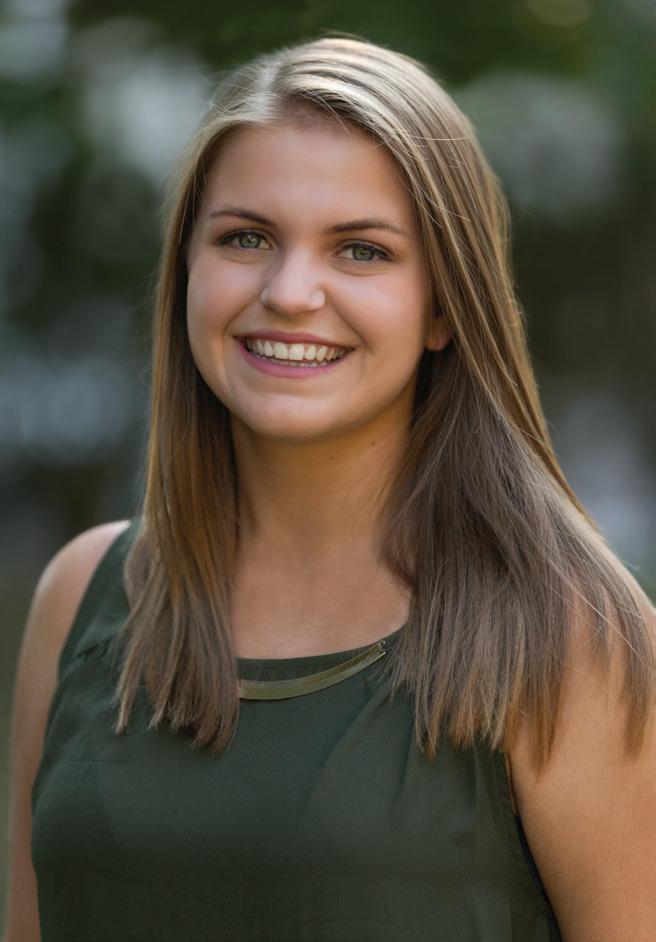
Kaitlyn Pacheco Editor-in-Chief backdropmag@gmail.com



Kaitlyn Pacheco Editor-in-Chief backdropmag@gmail.com
My proudest moment as editor-in-chief happened during the week leading up to our third production of the academic year. All of the writers, photographers and designers met to set headlines for each story, which is usually a meeting everyone dreads because it starts at 9:30 p.m. and can last for hours. But this time was different. From my spot at the front of the room, I watched staff members help first-time writers develop headline concepts, laugh about suggestions such as “Shut The Frack Up” and work together for two hours to define the purpose of our third issue. They weren’t acting like a group of students who work for the same publication; they were acting like a family. A loud, dorky and sometimes inappropriate family, but a family nonetheless.
Next year’s editor-in-chief understands that bond between Backdroppers more than anyone. She has worked tirelessly over the past three years to better the magazine and its contributors without asking for anything in return, and this organization wouldn’t be the same without her kind heart and dark humor. Congratulations, Alexandra Greenberg! Take care of our baby.
In our final issue of the 2016-17 academic year, Lilli Sher found 10 signature drinks seniors can’t leave Athens without having one last time (Pg. 14).

On Pg. 24, read how Assistant Managing Editor Emma Jenkins explored the technical side of Ohio University’s audio production program, and how Lauren Flum investigated how universities across Ohio decided whether they would allow concealed carry on their campuses after the enactment of Senate Bill 199 (Pg. 28). On the cover, Abbey Knupp wrote about the narrative thread that runs through past and present acts of student civil disobedience at Ohio University.
Until Homecoming,






Like new! 3 bedroom, 2 1/2 bath townhouses featuring spacious open & bright floor plan, onsite parking with garage, deck and much more. Close to everything… bike path, OU, O’Bleness Hospital, easy access to all major highways.

Like new! 2 bedroom, 2 1/2 bath townhouses featuring spacious open & bright floor plan, onsite parking with garage, deck and much more. Close to everything… bike path, OU, O’Bleness Hospital, easy access to all major highways.


4 bedroom, 2 full bathrooms, central air, washer, dryer in each apartment. Onsite parking for all residents, private back patio

3 bedroom, 1 1/2 bath house located at the end of a quiet southside street, central air, washer/dryer, plenty of offstreet parking.

4 bedroom, 2 bathroom house. Great uptown location, large front porch, central air, washer/dryer, onsite parking for all residents.
EDITOR-IN-CHIEF KAITLYN PACHECO
MANAGING EDITOR ALEXANDRA GREENBERG
ASSISTANT MANAGING EDITOR EMMA JENKINS
ASSOCIATE EDITOR ADAM MCCONVILLE
COPY CHIEF ALEXANDRA GREENBERG
ASSISTANT COPY CHIEF ELIZABETH HARPER
COPY EDITORS MAX CATALANO, MARIE CHAILOSKY, ANNELIE GOINS, HALEY RISCHAR, GABBY HOLLOWELL, ALEXIS MCCURDY, LANDER ZOOK
WRITERS JULIE CIOTOLA, MICHEALA FATH, MADISON EBLEN, LAUREN FLUM, ABBY HARDER, MICHELLE JACOBSON, KATIE KINGERY
ABBEY KNUPP, LILLI SHER, MACKENZIE SMITH
WEB EDITOR MADISON EBLEN
Send an email to backdropadvertising@gmail.com to get started.
PUBLISHER ADAM MCCONVILLE
CREATIVE DIRECTOR NATASHA RINGNALDA
ART DIRECTOR MEREDITH KERN
DESIGNERS EMILY CARUSO, KAITLIN HENEGHAN, MADDIE KNOTSMAN, JESSICA KOYNOCK, DIRECTOR OF MEMBER RELATIONS BRIANA EKANEM
MARKETING DIRECTOR GABBY HOLLOWELL
MARKETING & AD DESIGNER MOLLY PETRE
PHOTO EDITOR AMANDA DAMELIO
ONLINE PHOTO EDITOR MADDIE SCHROEDER
ASSISTANT PHOTO EDITOR MAX CATALANO PHOTOGRAPHERS JORDAN ALLISON, AUTUMN CROUSE, SARAH WILLIAMS
Stop by one of our weekly meetings at 8 p.m. Tuesdays in Scripps 116.
Follow us on Twitter
@BackdropMag
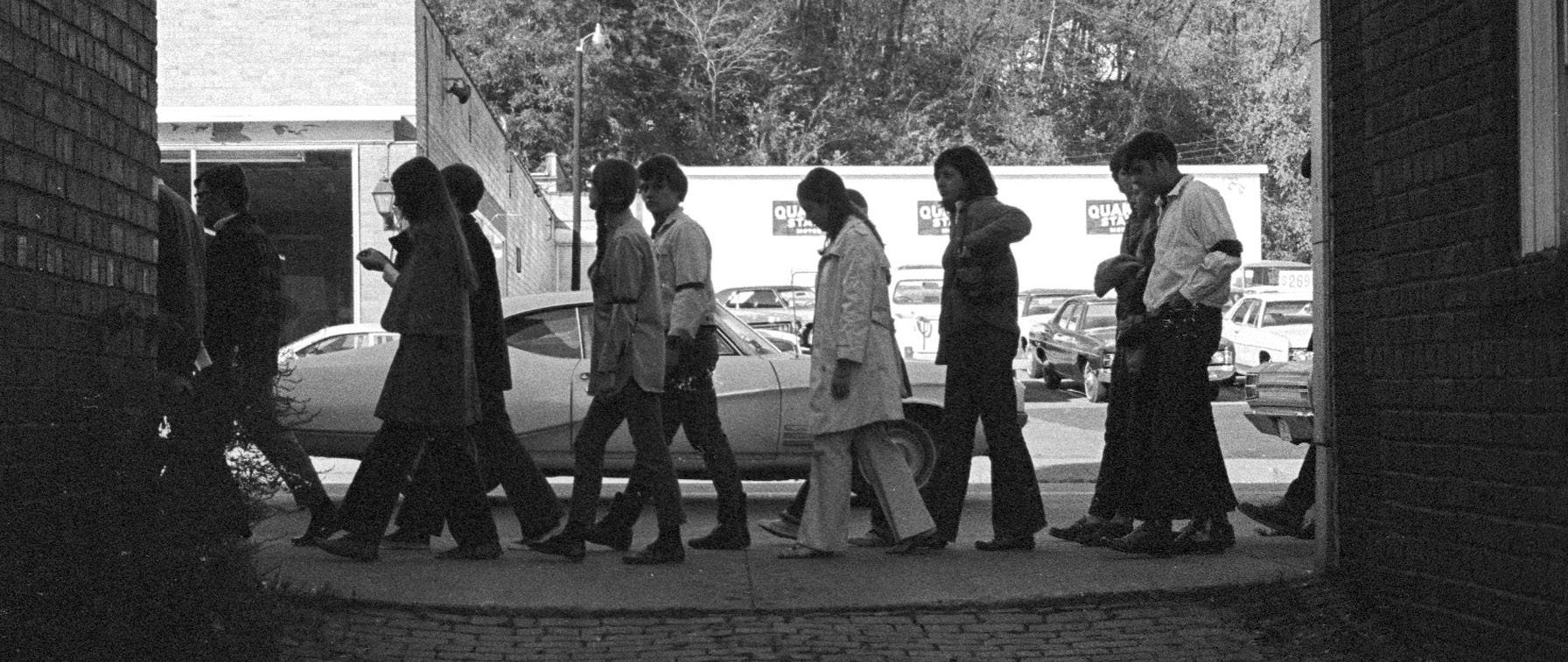
TALES
HISTORY SHOUTS BACK
Current Ohio University students carry on the long history of civil disobedience in Athens. 20
THE SOUND CROWD
Students explore the intricate art of audio production . . . ............... 24
UNDER THE GUN
Senate Bill 199 allowed campuses across Ohio to discuss and update their concealed carry policies . . . ........................... 28
Three students describe what influenced the decision to get their tattoos
. .6
FOLLOWING BIG FOOTSTEPS
A community in Southeast Ohio gathers evidence on the existence of Bigfoot . . . . 8
SWEETER WITH TIME
Laura Berry’s maple syrup business is rooted in two decades of hard work . 10
COMMUNITY MOVES
Generations of dancers have fostered friendships at Factory Street Studio . . . 12
INFOGRAPHIC
CLASSICS FOR THE CRAWL
Check out Court Street’s signature sips to guide your next bar crawl . 14 FOOD
TAPPING INTO THE CRAFT BEER MARKET
The Eclipse Company Store brings diversity to Athens’ drink selection . 16
SMOOTHIE BOWLS FOR SUMMER
Try Backdrop’s original recipes for fresh smoothie bowls . . . 18
PHOTO STORY
PAINT THE TOWN GREEN
Check out how Athens residents celebrated St. Patrick’s Day . . . ..................... 32
ON THE BRICKS
Mark your calendars for the best events Athens has to offer this spring . ................... 36
SEX & HEALTH A SPACE TO HEAL
The Rural Women’s Recovery Program supports women through addiction recovery. . 38
SPORTS SET FOR NATIONALS
Determined to succeed, Ohio University’s women’s club volleyball team sets its sights on nationals. . .40
LEGENDS AT THE END OF TUNNEL
One Backdrop staffer cracks the secrets of the underground tunnels . . . . 42
EXHIBIT A
A showcase of work by student photographers . . 44
PHOTO HUNT
Spot the five differences between these photos of Congress Fest . 45
BY MICHAELA FATH
PHOTOS BY AMANDA DAMELIO & PROVIDED BY MORGAN COOVERT

It actually came from two different things. My tattoo is a queen bee with a line from my favorite poem by Maya Angelou, ‘Phenomenal Woman,’ underneath it. I’ve wanted to get the poem tattooed on me since I was 16. … It speaks for who I am, since I am most definitely a feminist. My senior year of high school, I did my capstone project on the bees, and I learned a lot of things about how bees act in their
hives, specifically queen bees. If she dies, the whole hive goes into a swarm and can’t really live without her. I always wanted to be someone for people to rely on and I guess be my own version of [a] queen bee.
My cousin actually did my tattoo for me. It was really cool because he spent a lot of time sketching and doing the tattoo itself because he knew how much
Students tell the stories — both the good and the bad — behind their body art.
it meant to me. I decided to get the phrase in Arabic because I wanted it to be unique to me. I thought that maybe if I didn’t want someone to know what it said, I guess it would act as a secret within myself. I chose to get it in Arabic because I really appreciate the Arabic culture and the beauty behind their language. I got it specifically on my spine because that place is the center of yourself, so even like the placement too is kind of significant to me, and I didn’t want it to be somewhere that everyone could see. It hurt like hell, though.
I was with all of my friends during the game, and honestly, I did not think for one minute that we were surely going to lose until the very end of the final inning. Even when [the Cleveland Indians] were down by four runs, I was still pretty confident that they would come up on top. Everyone around me for the most part thought my tattoo was pretty cool, except for the two [Chicago] Cubs fans that wanted to fight me at the end of the game. When I first posted the picture of it on Twitter, most people thought it was fake.
My brother and I had always done crazy things like this. He passed away a couple of years ago, and our whole lives we spent trying to one-up each other with doing things like this. He was 30 when he passed away, so I spent most of my time trying to play catch-up. Part of the reason why I don’t regret getting this tattoo is because I feel like I finally outdid him one last time. My parents were pretty surprised when I told them about [the tattoo], but they weren’t mad at me at all. They really didn’t think that it was that big of a deal, but they were still kind of bummed about it because they didn’t want me wasting my money.

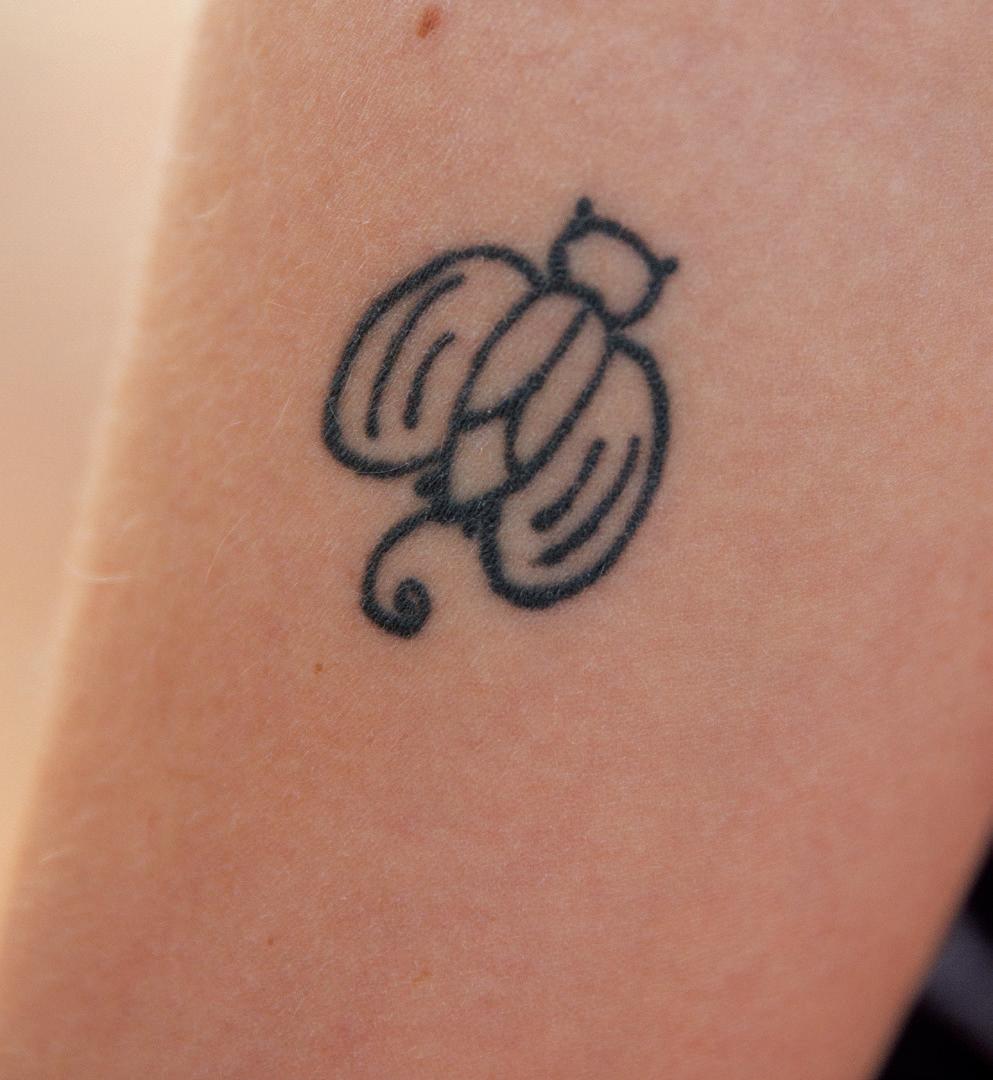
My tattoo is a firefly bug that I drew myself the morning that I got it. I had been dating a guy for about two years [who] didn’t like the tattoos I had originally and thought any more I would get would look trashy. I felt kind of held back because of this until he broke up with me. After [the breakup] happened, I was a mess to the point where I was just so angry that I decided to get another tattoo. I called my tattoo artist as soon as I woke up the next day and got it done a few hours later. I liked it for a bit, but
I definitely look back at it now and laugh. I realize that the only reason I got it was because I was so heartbroken over a boy. Everyone does stupid things.
I learned that I have to think things through before I do them. I think that 'spur of the moment' is a great motto, but when it is super permanent, it becomes different. Even though I do pretty much regret it and have to wake up to it every day, I know I learned a great lesson from this.
BY MADISON EBLEN | PHOTOS AND ILLUSTRATIONS BY JESSICA KOYNOCK
The search for Sasquatch continues in Southeast Ohio.
The forests of Southeast Ohio are home to a variety of common woodland critters, such as squirrels, deer and black bears. But some believe a certain hairy bipedal might also call the region’s wooded areas home.
The Southeastern Ohio Society for Bigfoot Investigation (SOSBI) was founded in 2008 by a group of librarians from
the Crossroads Branch Library in Cambridge, Ohio. They set out to create an open space for people to talk and share stories about Bigfoot without fear of judgment. One of the founders, Doug Waller, began studying the history of Sasquatch after starting his job at the library in 1992.
“Suddenly, I had all these Bigfoot books at my disposal,” Waller says. “So, I read
everything we had and then would send away to other libraries. I’m up around 180 books now that I have gotten read (sic).”
Waller has published two books about Bigfoot, with a third book expected to be out in April. He took his interest in Bigfoot and, with the help of a few other librarians, started hosting talks at different libraries, as well as holding official SOSBI meetings every other month. The meetings started small, with about a dozen people coming together on Waller’s back porch, but have grown to gatherings of more than 70 people at a time.
The society was featured on an episode of the Discovery Channel’s Finding Bigfoot, where longtime SOSBI member Lorena Cunningham shared one of her encounters.
Cunningham says she had her first Bigfoot sighting in July 1984 while she was playing with her three children by a forest in Sharon, Ohio. At first, Cunningham thought she heard an escaped calf come out of the woods but says she was greeted by something entirely different.
“I walked over by the outhouse, but I didn’t encounter a calf,” Cunningham says. “What I encountered was this big, huge, hair-covered creature standing there looking down at me, and I was standing looking up at her.”
She says the creature had huge biceps underneath reddish-brown

hair that blew in the breeze. After staring down the creature and making sure her children were safe, Cunningham retreated back to a nearby family member’s home where she recounted what she saw.
A few days later, Cunningham retold her encounter to the Noble County Sheriff’s Department. She also brought in a picture she drew of the creature she saw.
“I found out many years later that they hung it up on the bulletin board and laughed about it,” Cunningham says. “They didn’t take me serious (sic).”
Cunningham didn’t let people’s disbelief get to her, though. She had another encounter a few years ago and continues to come to SOSBI meetings to speak about and listen to others’ experiences.
Scott Moody, a professor emeritus of biological sciences at Ohio University, hasn't had any personal encounters with Bigfoot or found evidence that supports their existence. Still, he has been conducting research on Sasquatch for about 20 years. He says there’s a popular argument that Bigfoot could be closely related to orangutans, which would explain the reddish-brown hairs that have been found and reported in sightings.
Along with hair, Moody cites other types of evidence that are important to consider, including footprints and vo-
calizations. But he says one piece of evidence stands out among the rest.
“I think the best evidence is the fact that virtually every Native American tribe has, in their language, a name for this hairy, person-like creature that lives in the woods,” Moody says. “And the first Europeans coming into North America all reported these accounts given by Native Americans.”
Moody has been to various conferences and talks about Sasquatch, including a few of the SOSBI meetings.
At the March 4 meeting, more than 40 people packed into the new meeting place for SOSBI, the Guernsey County Sportsmen for Conservation clubhouse in Cambridge, Ohio. A few families took up spots in the crowd, all eagerly anticipating the night’s discussions about upcoming campouts, library talks and stories of sightings of the tall, hairy creature. Wesley Ellis, a petroleum engineer from Cambridge, talked about his Bigfoot encounter.
Ellis was driving to work at about 2:30 a.m. one day in November when he saw a large, hairy body off to the side of the highway that appeared to have been hit by a vehicle. He says he had plans to return to the area after work to take pictures, but by the time he came back, the creature was gone.
“ What I encountered was this big, huge, haircovered creature standing there looking down at me.
LORENA CUNNINGHAM
THE SOUTHEASTERN OHIO SOCIETY FOR BIGFOOT INVESTIGATION MEMBER
“No blood, no nothing,” Ellis says. “This was a really graphic, nasty accident, and it was weird because it was just totally sanitized.”
After Ellis finished telling the crowd about his experience, some people recalled similar encounters they had while others questioned how and why such an accident could get cleaned up so quickly.
“I had no answer to that, and that’s something that’s bothered me to today,” Ellis says. “What happened?”
There are many questions surrounding the identity and existence of Bigfoot and no clear, certifiable evidence proving their existence has been found.
“There’s been some of these hairs and pieces of skin that have been analyzed by DNA, and have all been found to be something we already know,” Moody says. “So, that would be the slam dunk if someone found some hairs, and it’s definitely primate DNA but doesn’t belong to any known species of primate. Then we have it. But it hasn’t happened yet.”
Until then, researchers and groups such as SOSBI will continue to investigate, share stories and invite anyone who’s interested to listen and consider what else might live among the trees of Southeast Ohio and beyond. b
Class A, Sightings, Encounters
Class B, NonSightings, Screams, Rocks Thrown, Smells, etc.
BY ADAM MCCONVILLE PHOTOS BY MAX CATALANO
For 20 years, Sticky Pete’s Maple Syrup has been a golden staple of the Athens community.
Laura McManus-Berry’s business is sweet. Since 1996, Sticky Pete’s Maple Syrup, the company she and her late husband founded, has produced, bottled and sold maple syrup from a farm just a few miles southeast of the city of Athens. Through 20 years of business, Sticky Pete’s has built a reputation for itself among stores, restaurants and customers in Athens County.
At 60 years old, Laura is still energetic about the maple syrup business. She continues to pour time and effort into the sweet process of turning sap to syrup, and she knows what it takes to get the job done.
“You've got to go from being the farmer and doing the labor, to the [scientist] of the trees and the sap as it comes out, to the cook, boiling and getting it right,” she says, “because you just get one shot.”
Making maple syrup was a hobby for Laura’s late husband, John, for several years before they opened their business. When they first thought of producing syrup commercially, they tagged about 750 maple trees. The woods had been thinned out years before the Berrys came to the property, and many of the trees with hard wood had been cut down and used to support mine structures. Over the years, the farm has expanded to host 2,000 trees on 40 acres.
The company got its name from the family's dog, Pete. The Berrys met Pete when he wandered onto their property, and they decided to take him in.
“We wanted to name it after Pete because 'John and Laura's Maple Syrup' sounded pretty boring to us,”
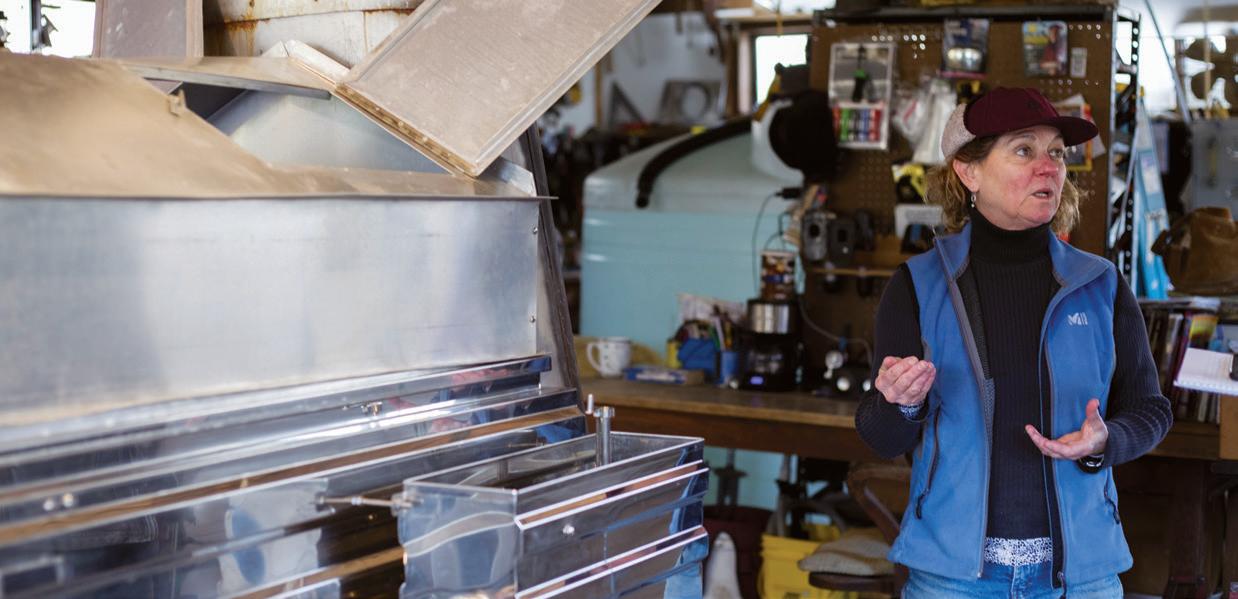
Laura says. “... We really didn't have a marketing strategy. We just knew 20 years ago there was no one in the area … locally making syrup on a large enough scale to have it in shops and retail it."
In its 20 years, Sticky Pete’s has made a name for itself. The Athens Farmers Market, Village Bakery, Casa Nueva, White's Mill and Nelsonville Emporium sell the syrup. Restaurants use the syrup in recipes; Sticky Pete’s is a key component in the maple barbeque sauce sold at Uptown Grill. Laura is also adding other maple products to her lineup, including maple-crusted nuts, maple granulated sugar and maple candy.
It all starts with the sap. To reach it, Laura walks down a dirt and gravel road, stepping over the occasional deep ruts of mud left by tires. At the end of the road sits a squat 1,500-gallon tank, insulated by blue foam and covered with a blackand-white-patterned cloth. Bundles of gray tubing run from the top of the tank to the hillsides. Those are the main lines, which branch into smaller, lateral tubes that connect to the maple trees. The system is fed by gravity; the sap flows back down the hills and into the tank for Laura to collect.
She makes changes and improvements to the system every year. Despite the steep climbs and heavy lifting, Laura loves what she calls “constructing the puzzle [of] putting together the lines”

and being in the woods.
“I love these trees. They're so amazing, and … I learn something new every year,” she says. “If you pay attention you'll learn. Little nuances, little different things. The trees dictate everything. Mother Nature is true. She tells you what you can and can't do, and when it's over, it's over.”
Recent warm winters have affected syrup production. In 2016, Laura made the lowest quantity of syrup she can remember from the past 20 years. This year, a sudden temperature spike at the end of February temporarily shut down sap production.
"If we don't have cold, if we don't have freezing and thawing for a certain amount of weeks, you're not going to make a maple crop,” she says. “You just won't."
But if temperatures are below freezing, the sap won’t flow. During production season, which usually runs from February to March, Laura wakes up early to check the weather. As soon as the temperature rises above 32 F, she can begin to pump the sap through a long, thin supply line that runs along the path to her homestead. At night, if the temperature dips again, she’ll have to blow any sap still in the line back up to the tank in the woods. She keeps a frying pan near the tank for just such times, setting it under the pump to catch any leaks.
“[With] the amount it takes to get one drop of sap from that tree, believe me, I freak when I see sap spilled on the sugarhouse floor,” she says.
The sugarhouse, a one-story, rectangular building that could comfortably fit three cars, is the sap’s destination. Thousands of gallons
of sap flow through the woods to a second massive holding tank beside the sugarhouse. Pipes connect the tanks to the machinery inside.
Even when there’s no sap, the sugarhouse still smells of maple. Tools, tubes and 20 years’ worth of old photos, manuals and memories line the walls. On the right side of the shed, the reverse osmosis machine removes a large amount of water and leaves behind a more concentrated product. Laura says the sap in the pipe is between 1.5 and 3 percent sugar; after it has gone through the machine, it contains between 9 and 11 percent sugar. But the state of Ohio requires pure maple syrup to have a sugar content of at least 66.5 percent.
That’s where the evaporator, painted black with outlines of maple leaves on the bare metal, comes in. But when the evaporator first arrived at the Berrys’ sugarhouse, John and Laura didn’t know what to do with it.
“When we got this evaporator, there wasn't even an instruction manual with it. I'm not kidding,” Laura says. “You get a drill and at least you get an instruction manual, right? No, they sent nothing, and we're like, OK, let's figure this out.”
Laura describes her husband as a “Renaissance man” who could pick up and figure out almost any project. John, a hard landscape construction artist, purchased the farm in Athens in the ’70s, and he built most of the structures on the property: their house, the pond and the studio where he carved marble.
Together, they got the evaporator up and running. The boiling process takes hours; the sap flows from the third holding tank into the preheater, which brings the sap up to 180 F. It then falls into the flue pan, where it boils until it becomes syrup. Laura empties the syrup into 5-gallon
buckets, which she lifts and pours into a filtering machine. That removes all the bits of hardened sugar — sugar sand — in the syrup, leaving it clear and smooth. After that, the syrup is stored until it’s ready to be bottled, packaged and sold.
Laura grew up on a corn farm in Illinois, but she never felt driven to be a farmer as a child. She traded land for sea and worked her way from cook to ship captain in the Virgin Islands. Her company helped the government test sonobuoys, small buoys equipped with sonar that aid in anti-submarine warfare and underwater acoustics research.
In 1981, she met John through mutual friends. In 1989, when Laura was stationed in St. Croix in the Virgin Islands, Hurricane Hugo hit and wiped out most of the island's infrastructure. She moved to Athens with John the following year. Although John passed away from cancer in February 2002, his name still appears on the company’s logo. "I feel like he's still a big driving part of this business, and that's why I haven't changed my label,” she says. “Because Sticky Pete's to me really means John Berry and Laura McManus-Berry.”
At heart, the business is still the same. Laura continues to run Sticky Pete’s with help from a friend who assists with the sales and marketing aspects of the business and a boarder who lives with her in exchange for labor. Laura feels a sense of loyalty to her long-term customers and does her best to make sure they are satisfied before looking to expand.
"I'm not a big business,” she says. “I get by. Am I successful? I make ends meet. Can I retire? Probably never. … But I love what I do. I love being in the woods; I love nature.” b

BY ABBY HARDER | PHOTO BY SARAH WILLIAMS
enior Sydney Sanders spent years training to be a dancer and chose to study dance at Ohio University to improve her technique and skills. But it was her internship with Factory Street Studio (FSS) that inspired her to focus her future on helping young dancers reach their goals.
At FSS, a nonprofit dance studio based in Athens, the staff members promote dance technique, self-esteem and noncompetitive attitudes for dancers. By offering classes for all ages, the studio provides a warm and welcoming environment for anyone who comes through the door.
Due to growing interest, the studio has added teachers and interns to its crew. Athens, like many small towns, lacks dance teachers, so the studio’s board of directors turned to Ohio University’s School of Dance, Film and Theater for help. In recent years, many dance professors and students studying dance have taught class in the vibrant rooms of FSS during and after their time at Ohio.
Dancers can sign up for classes ranging from pointe and jazz to African dance and capoeira, a Brazilian martial arts that combines elements of acrobatics, fight and dance.
Maria Warmke, FSS’s business manager, coordinates with parents and dancers and takes care of other duties that keep the studio running. Before that, she was a dancer herself and took classes at the studio’s original location on Court Street.
“ It is so nice to see them have that lightbulb moment when something just clicks and it makes sense."
Sanders felt the impact of FSS through her internship experience. Last year, Sanders went to the studio twice a week to help create lesson plans and develop dancers’ technique.
“I had people behind me that were trying to improve my skills while I’m being the teacher and improving the younger one’s skills,” she says. “So, that whole comparison is really nice to feel.”
Sanders' experience at FSS has reinforced her desire to become a dance teacher and start after-school dance programs for public school students. Watching the effect her teaching can have on younger dancers is the fire that fuels her dreams. She is now a full-time staff member at FSS and teaches tap and jazz classes.
“It is so nice to see them have that lightbulb moment when something just clicks and it makes sense,” she says. “Those are so impactful for me as a teacher, and every student should have the opportunity to have those lightbulb moments.”

Sydney Sanders
As Maria walks past hand-painted walls and climbs over backpacks in the lobby, she describes the importance FSS has had on her and her family.
“We want our kids to work together and to love for each other and care for each other and not compete,” she says. “So, to me as a mom, that is the most important thing: the cooperative spirit.”
Jayne Warmke, Maria’s 17-year-old daughter, dances at the studio and has felt that compassion from her peers ever since her first tap class 12 years ago.
“It's just a safe place. Like, whenever I'm having a bad day it's like happy little sunshine. And I wouldn't know any of the people in this room if it weren't for dance,” Jayne says. “... It's
nice to have people depending on you, because I need people to expect stuff from me or I'm never going to get anything done. So, if I have a whole class of people depending on me as much as I depend on them, it helps.”
Maria credits part of the dancers’ love for the art to FSS’s work as a non-profit studio. By offering a welcoming environment, the dancers, both young and old, can find success in dance without judgment.
“We accept everybody and anybody, no matter what,” Maria says. “... It really does give [FSS] a sense of community because everything we make goes right back into what we're building. We're always trying to improve the studio.”
The sense of community is also expressed through the high school students’ junior and senior year capstone classes, where the dancers raise money to go on a trip to further their knowledge of dance outside of Athens. Last year, the dancers visited University of Cincinnati and Northern Kentucky University, where they created their own routines.
For some senior students, that trip is the push they need to pursue a career in dance. From the start, dancers at FSS are surrounded by Ohio dance students and teachers, and that influence is vital to shaping their future plans. This year, four FSS students applied to Ohio’s dance department, hoping to advance their skills at the collegiate level.
Ohio University and the studio have changed Sanders’ life in the same way she has changed the dance experience of her students. Dancers such as Maria and Jayne have felt the cycle of movement that has been going for years, and the studio has no intention of stopping it now.
“I don’t think a lot of people understand the impact [dance] has on such a small level, but it’s not really that much of a small level. It is a big deal,” Sanders says. “I think people just need more exposure to it, especially the kids. I just always think about if I didn’t have my after school program, what would I be doing right now? I have no idea.” b
Athens bars provide specialty drinks for any occasion.
BY LILLI SHER | ILLUSTRATIONS BY EMILY CARUSO
It’s that time of the year: the cherry blossoms by the Hocking River bloom, fest season is in full swing and seniors plan their final Court Street bar shuffles. Here are some signature drinks to celebrate your send-off. b
TONY’S TAVERN
Coffee
Hazelnut alcohol
THE CRYSTAL
Vodka
Grape Pucker
Sour mix
Sprite
THE
THE J BAR
Vodka Gin
Rum Berry liquor
Sprite
Sour mix
BRONEY’S
Champagne
Peach Daiquiri
Triple Sec
Peach Schnapps
Water
Rum
Vodka
Gin
Blue Curacao
Razzmataz
Sour mix
Sprite
Cranberry juice
CASA NUEVA
Cucumber
Cilantro
Jalepeno
Spicy salt rim
Triple Sec
Lime juice
Lime garnish
RED BRICK TAVERN
Vodka
Gin
Rum
Blue Curacao
Peach Schnapps
Triple Sec
Red Bull
THE OVER HANG
Vodka
Gin
Rum
Orange juice
Sour mix
Grenadine
From barbecue to beers, Sean Kiser brings signature taste to the table.
BY ALEXANDRA GREENBERG | PHOTOS BY MAX CATALANO
Standing behind the recently installed bar, Sean Kiser lifts a glass marked with the Eclipse Company Store logo to one of the beer taps as “Listen to the Music” by The Doobie Brothers plays in the background. He raises his left arm — appropriately tattooed with the word “home” with the outline of Ohio as the "o" — to pull the lever as his other hand tilts the glassware to achieve the perfect pour. He
hands the drink to a waiter who delivers it to a table of customers. He’s waited for moments like this for years.
“[It’s] finally nice to actually unlock the door and have people coming in,” he says.
Kiser has owned the Eclipse Company Town building for almost four and a half years. He originally intended to use the space as another Kiser’s Barbeque location, but his plans were derailed when the Ohio Department of Transportation consid-
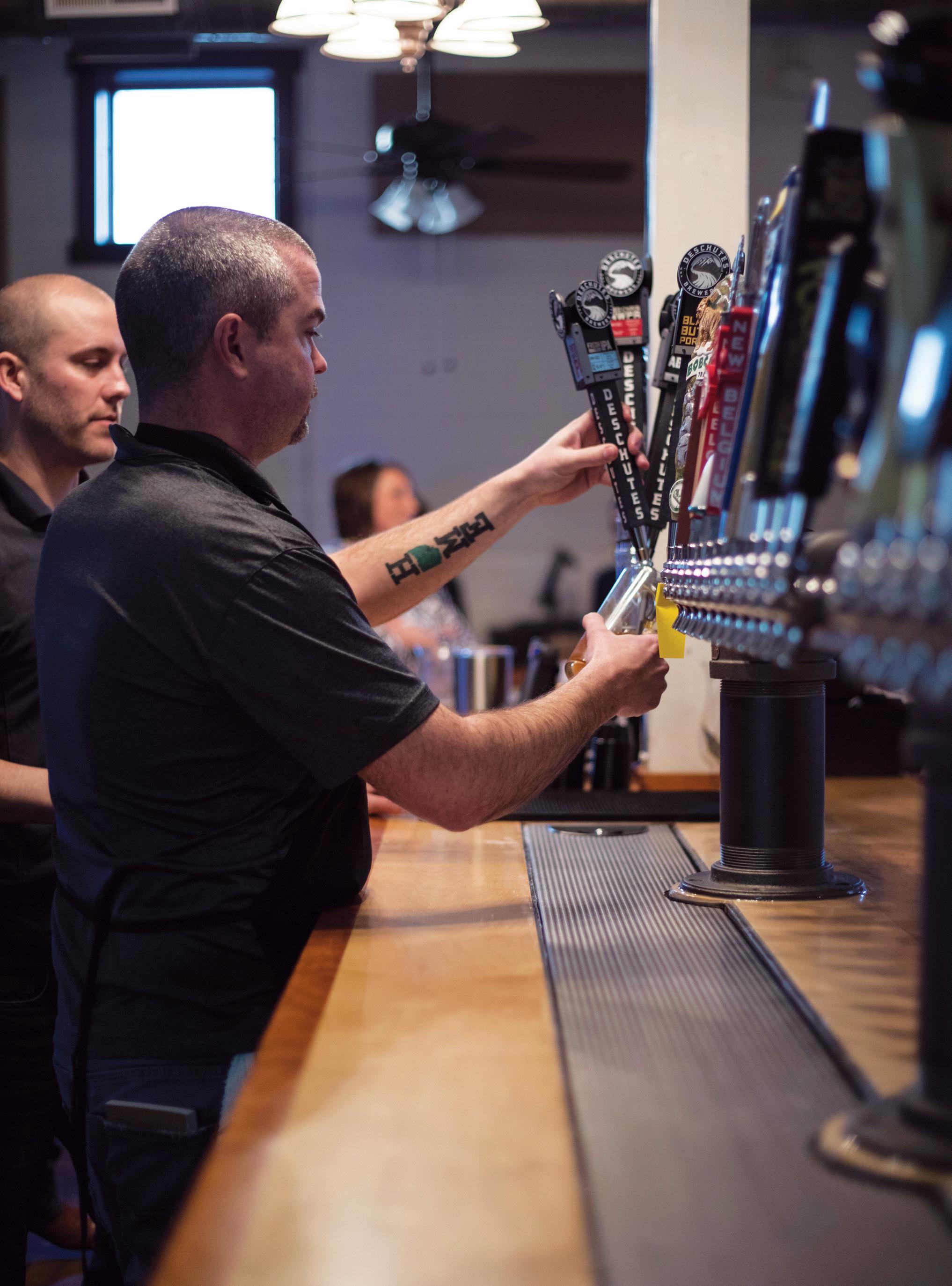
ered filling the median on U.S. Route 33, which would cut off quick access to Athens. The Eclipse Company Store became a rental and wedding facility, and Kiser put his business plans on hold until the staff constructed an outdoor concert stage in March 2016.
“As soon as we started seeing that go up, it was like all right, let’s get back to the idea of doing an everyday business,” Kiser says.
Although Kiser doesn’t drink, he wanted
to tap into the craft beer market. He and General Manager Brandon Lackey, who experienced the brew craze while he lived in Cincinnati, knew it was the perfect time to create a craft beer hall in Athens.
“[Kiser] always had this vision,” Lackey says. “But when I joined on, us together as a collaborative came up with this idea that we should probably go out and do this because it seems like the perfect time to get it going.”
As soon as the last scheduled rental finished in January, they started renovating the building so it would be ready for opening day on March 14.
They laid new floors, added tables made from local wood, purchased pool tables and built the bar, complete with a mural by local artist Keith Wilde. Kiser says Wilde tried “to make it as Athenian as possible.”
“That’s why you see the hills, kind of representing [the] Appalachian area in which we live and farming and food and communities and music and stuff,” Kiser says. “Just really highlighting Athens.”
Lackey plastered the white pillars with local brewery stickers and plans to add old tin signs to the walls to give the beer hall a rustic look. Classic arcade machines, were added to the second floor, but will continue to serve as a small, 50-person rental space.
In addition to the stage, picnic tables were added to the outdoor beer garden between the building and train tracks to create what Lackey calls a “German hall feel.” They installed a walk-in beer cooler so customers have easy access to drinks. Unlike cheaper drinks at Court Street bars, Eclipse Company Store serves more expensive brews in flights, pints, growlers and snifters.
“Our price points out here are not going to be for students to come out and just get wasted at,” Kiser says. “I mean, it’s going to
be anywhere from $4 a pint to up to, some of these beers may cost $15 per beer.”
Eclipse Company Store has 45 taps: 40 for beer and five for sodas and other nonalcoholic beverages, which come in handy for family game nights on Wednesday evenings. Kiser says it’s important for people who are underage or don’t drink to be able to partake in the craft beer world.
Although drinks from local breweries are available, fresh, non-local beers will also be offered from time to time during tap takeovers.
“It’s a way to really highlight one of the distributors we have,” he says. “... It’ll be like an introduction to something nobody’s seen or had, so just new freshness.”
For a tap takeover, a brewery serves its beers on five taps for as long as the kegs last. On the day of each takeover in what Kiser calls a “one-night celebration,” the brewery will visit Eclipse Company Store and allow guests to sample their beers and learn about their operations. The first to take over was Deschutes Brewery from Portland, Oregon, which visited the beer hall on opening day.
“They had a great turnout, and everyone loved the beer,” Deschutes Marketing Manager Nikki Ghent says. “... The food was great, and the customers all seemed excited to be there. And many were inquisitive about Deschutes when I was walking around introducing myself.”
The beer hall also holds tap battles where two breweries compete for the title of most popular brew. At parties centered around the faceoff between two beers or breweries, Kiser says attendees try each brew and vote for which one they like best. Although the losing drink won’t leave the taps forever, the more popular brew could stay for much longer.
“What we’re really looking to do here is


being able to keep our lineup fresh,” Kiser says. “So, we won’t really go with specific beers and keep them all the time.”
Kiser hopes to draw in students and residents of The Plains and Athens, as well as out-of-town visitors. In addition to happy hours and other discount events, the beer hall also hosts Thursday night pool tournaments. Instead of creating a bar similar to those on Court Street, Kiser encourages his customers to stay for the food, music, fun and beer samples.
“We really want this to be kind of a tourist, day trip kind of place,” he says.
Although Kiser may craft the beer hall’s burgers and wings with Kiser’s Barbeque sauce and hold an occasional barbeque buffet, he is set on making the Eclipse Company Store a separate business. That means splitting his time between the Kiser’s on East State Street and the new beer hall. His attention will be focused on the new business for now so he and the staff can create a schedule for upcoming beer elections to keep the menu fresh.
“This is going to be pretty much what brew week is every day,” Kiser says.” So, we have the ability for people to experience different crafts and really enjoy the beer.” b
Tuesday-Thursday: 11 a.m. to 9 p.m.
Friday-Saturday: 11 a.m. to 11 p.m.
Sunday: 11 a.m. to 8 p.m.
BY JULIE CIOTOLA | PHOTO BY NATASHA RINGNALDA
Combating the heat during the warmer months can be tricky. Hot foods are out of the question, and ice cream and other chilled sweets are packed with sugar. Before reaching in the freezer for something that will jeopardize your summer bod, blend up a smoothie bowl.
A smoothie bowl is exactly what it sounds like; typically, it provides several servings of fruit, along with a protein-based ingredient such as almond butter or kale. Aside from health benefits, smoothie bowls that create patterns out of fruit, nuts and granola have an Instagram-worthy aesthetic.
Before devouring the bowl, stir everything together. The crunchiness from the toppings will balance out the smoothie’s naturally sweet flavor. Don’t know where to get started? Check out a few of Backdrop’s smoothie bowls to help kickstart your creative juices in the kitchen! b
Ingredients: 1 banana, 1.5 cups raspberries, ½ cup soy milk, ½ cup ice, 2 tablespoons almond butter, 1 tablespoon honey, 5 sliced strawberries, ¼ cup granola, 2 tablespoons shredded coconut
Directions: Blend together the banana, 1 cup of raspberries, soy milk, ice, almond butter and honey. Transfer to a bowl once consistency is smooth. Top with coconut, remaining raspberries, granola and strawberries. Drizzle with honey if desired.
Ingredients: 1 cup kale leaves, 1 cup almond milk, 1 sliced banana, ½ avocado, ½ cup ice, ½ cup raspberries, 1 sliced kiwi, 1 teaspoon chia seeds
Directions: Blend together kale, almond milk, half of the banana, avocado, ice and agave. Transfer to a bowl once consistency is smooth. Top with raspberries, kiwi, chia seeds and the other half of the banana.

Top your smoothie bowl with the heaviest ingredients to achieve the best-looking design. Strawberries, bananas and raspberries are especially appealing options.
BY
Cardboard signs littered the ground at their feet. Their voices combined as they chanted and sang, finding comfort in each other and their unified convictions as they challenged the university to hear their demands.
Though the chants and songs change with every protest, the spirit and determination of Ohio University students perseveres.
The narrative was similar on Feb. 1, when students occupied the fourth floor of Baker Center to demand that then-President Roderick McDavis make Ohio University a sanctuary campus. The noise from the protesters paused when campus police, local police and state troopers urged the standing crowd to move outside and told the tightly packed circle of sitting protesters to vacate the area or face arrest.
After a second warning, an officer approached the outer rim of the circle, hauled a student to their feet, and tied their hands behind their back with a zip tie, peeling off the layers of the group’s protective circle.
“Because we were facing in, you knew there were cops standing right behind you and you didn’t know when they were going to pick you. It was really scary, just waiting to be grabbed,” says one of the students arrested during the sit-in. She prefers to remain anonymous due to the publicity surrounding the trial.
Some protesters felt the decision to speak out and stay put was their civic duty, while others fought he urge to flee when the police appeared at the top of the escalators.
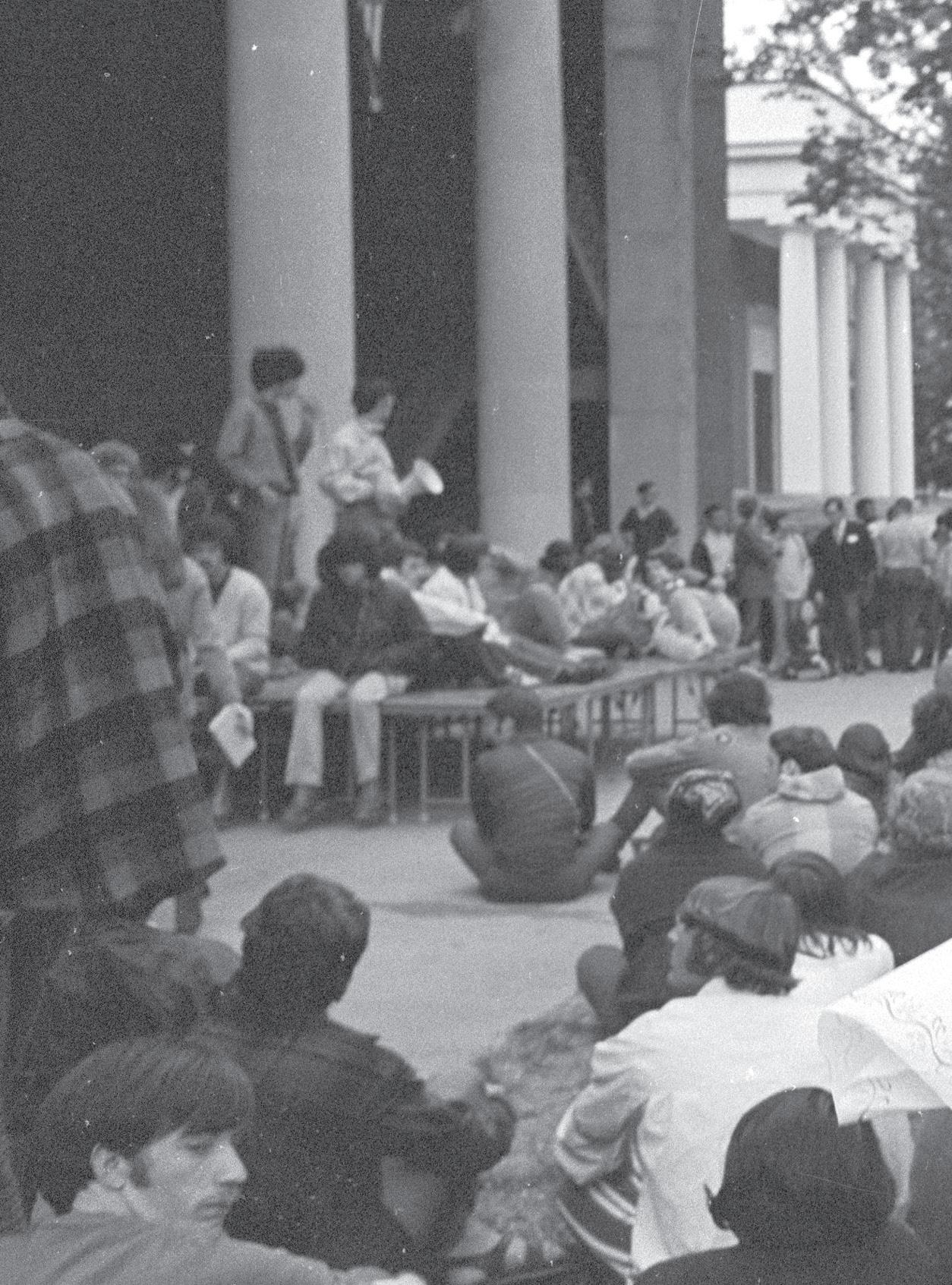
But they stayed. They sat. They resisted.
The protesters are known as the Bobcat 70. Although the group gained a large following after the event through social media, donation pages, additional rallies and coverage from news outlets, the hype surrounding the event is already fading, and it will eventually be remembered through old yearbooks, newspaper articles and photographs as the Bobcat 70 join the ranks of the Athens 9, the Athens 80 and the Athens 103.
Although details of past protests may be forgotten, civil disobedience is inherent to the history of the United States and dates all the way back to the country’s conception. Protests, rallies and acts of rebellion from students and faculty have also been used to enact change on a smaller, campus level. In the 1960s, the 1970s and again during the Gulf War in 1991, attending protests was as normal as attending class at Ohio.
Although students at Ohio worked for social change on campus during the 1960s, they also aided the 1964 Freedom Summer initiative in Mississippi and helped African Americans register to vote. Three Ohio students spent their summer aiding the initiative after attending a week long program at the Western College for Women in Oxford, Ohio – which later merged with Miami University – to learn how to run voter registration drives.
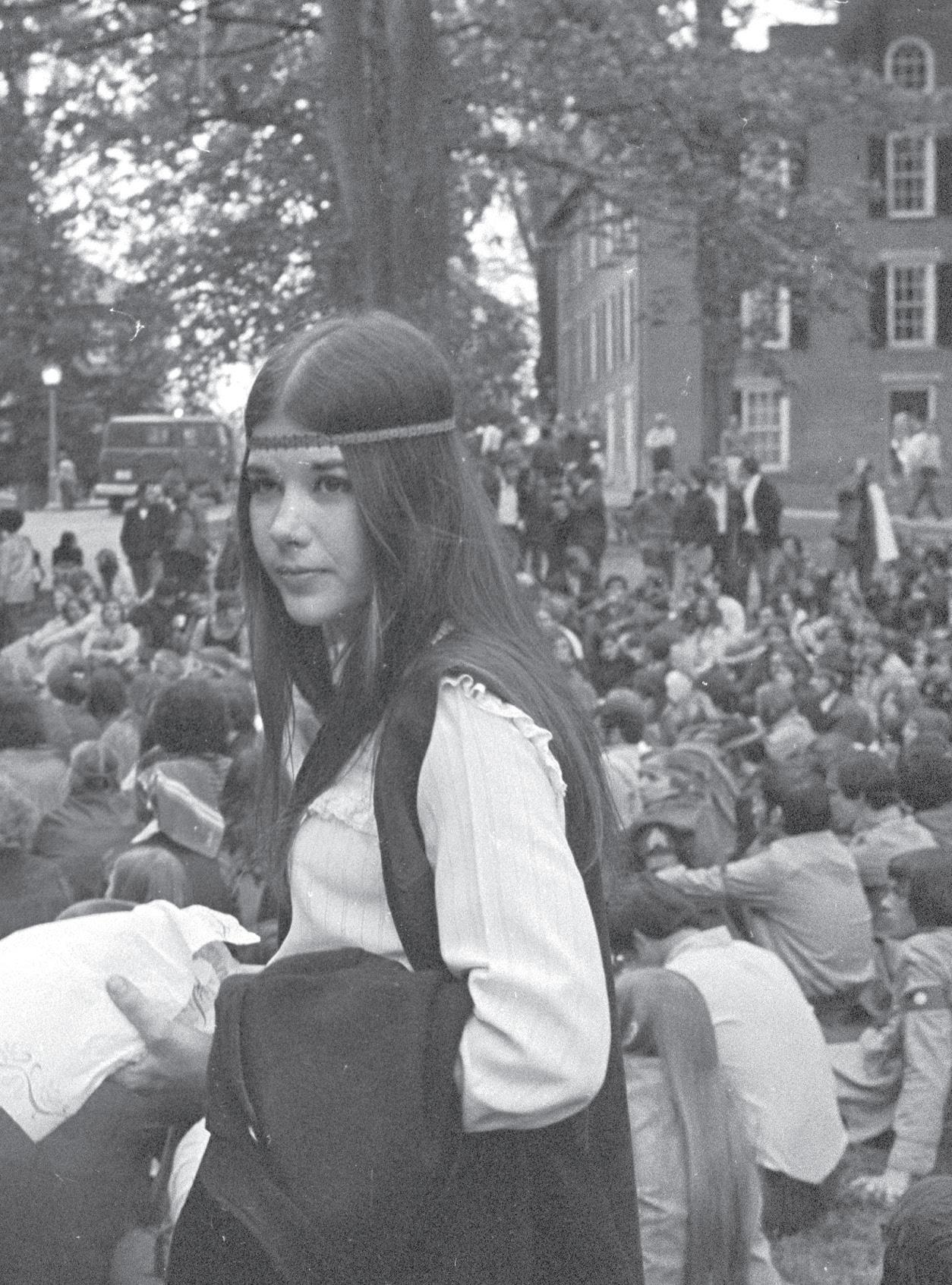
Freedom Summer and its volunteers collected clothes and financial contributions to help individuals who were laid off after registering to vote. Volunteers helped with everything from letter writing campaigns to driving supplies to Mississippi, which could have resulted in arrest.
Other students went south with local ministry groups to encourage people to participate in local movements and help register people to vote. Some members of the group joined protesters to march the last 10 miles into Montgomery, Alabama, as part of the famous Selma protest led Martin Luther King Jr.
During that time, students at Ohio University held a vigil on campus to honor those who were marching in Selma. Nearly 400 people participated in the rally, which was held in the Templeton-Blackburn Alumni Memorial Auditorium.
Then-President Vernon R. Alden, for whom the current library is named, wrote an open letter to The Post on April 7, 1965, in which he praised the students who marched in Alabama and those on campus who showed solidarity with the movement. Although he commended the students’ work and Ohio University’s effort to end “overt segregation,” he reminded them that
they had “much yet to accomplish.”
Heeding those words, a committee of students within the Black Student Development Center sent Alden a list of demands, one of which was to create an African American Studies program. President Alden and the senior administration officers listened to the suggestions and implemented the program in 1969.
Though progress was slow, students continued to advocate for equality on Ohio’s campus.
The women’s suffrage movement secured women the right to vote and was a major step toward gender equality, but it was far from the last time women rallied for their rights. In the 1960s, women were excluded from many opportunities, such as the Ohio University Marching 110.
“The most important thing about being a college woman is being a lady,” reads Ohio University’s Women’s 1964-65 Student Guidebook, which was 76 pages in length compared to the men’s 29-page booklet. The guide details the rules students must follow and the sanctions for breaking them.
As was customary of many universi-
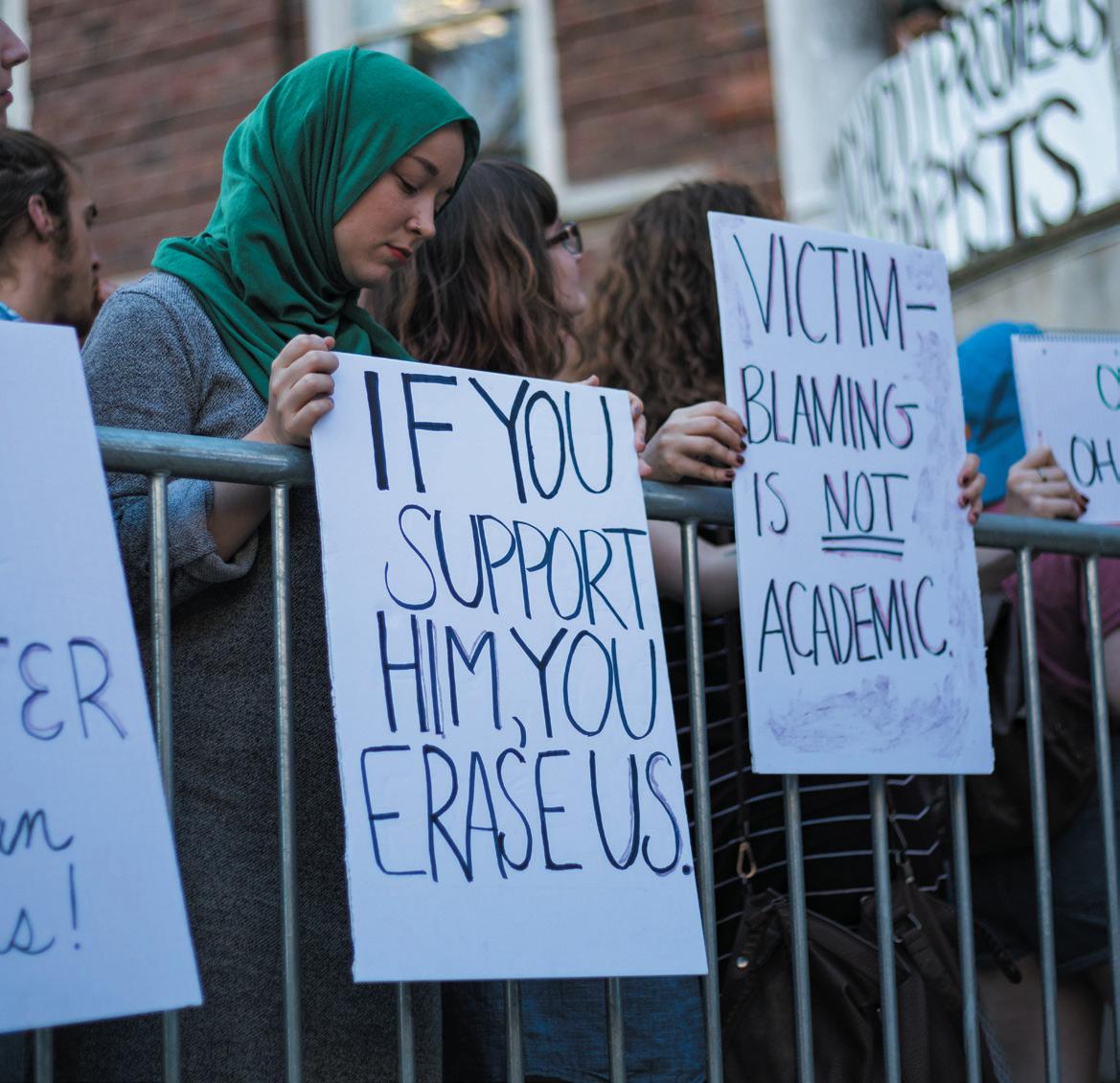
ties at the time, Ohio University set a curfew for female students, commonly referred to as “Hours.” Freshmen women were expected to be in their residence halls by 10 p.m. every weeknight, gaining an extra half hour during sophomore year and another half hour upon reaching senior status. All women were allowed to stay out until 12:30 a.m. on Fridays and Saturdays.
Every minute they were late after curfew counted against them, mounting toward punishment of a stricter curfew or a meeting with the disciplinary committee. If infractions continued, a woman could be suspended or expelled from the university. It was customary for most universities to act as in loco parentis, or as stand-ins for a student’s parents. However, the students were not thrilled with the curfew policies. On Jan. 22, 1971, 250 women broke the curfew and marched to then-President Claude Sowle’s house. They demanded that he listen to their demands and abolish the “Hours” rules. He stated that he couldn’t take immediate action, but was “in sympathy with their goals.”
Slowly, the regulations were rescinded due to the outcry from the student body, and the "Hours" regulations ended in 1972.
The administration was not always responsive to student demands, however. In fall 1969, students demanded that Ohio University honor the Vietnam War moratorium and cancel classes. In his first year in office, then-President Claude Sowle stated that he honored the student’s right to protest, but he could not make a public statement through the cancellation of classes.
His statement did not deter students or faculty. Teachers hung signs on the trees on College Green, displaying schedules of classes that they intended to hold on the lawn. Those teach-ins were used to educate students about the draft, events that were happening overseas and methods of dissent.
Students made T-shirts and signs to show their discontent, and they took their messages to College Green, the war memorial and the Memorial Auditorium, where they frequently hung banners. The protests were peaceful and many of the rallies consisted of bonfires, making music with trash cans and playing games that the students created. The students worked amicably with the
“ When somebody decides that this is not the life I want to live, you come out here and hold up a piece of cardboard.”
Emma Swaninger, Protester at the Escobedo rally
administration until eight women and a passerby who joined them were arrested for sitting in during a ROTC class on April 22, 1970. They were known as the Athens 9, and students grew more resistant to the ROTC's presence on campus after Sowle stated that he wouldn't drop the charges against the Athens 9.
Due to advocacy from the administration, the overall tension on campus was relatively low until May 4, 1970, when four students were shot and killed on Kent State University’s campus by members of the National Guard. Campuses across Ohio descended into chaos that caused many universities to close their doors for the rest of the spring semester. Sowle believed Ohio University could stay open, but the peace between the administration and students was beginning to break.
The administration instituted marshals comprised of students and faculty to stand duty around campus buildings at night to ensure that the protests remained nonviolent. The initiative began after the ROTC supply room in Peden was firebombed on May 7 by disgruntled students. Despite Sowle’s best efforts to keep the peace, the protesters grew more violent.
The night of May 11, Nelson Commons was firebombed. Firefighters worked for two hours to put out the fire that caused over $120,000 in damage. Meanwhile, other students smashed a window to get into Chubb Library, which was no longer in use as the university transitioned to Alden Library, after a rally in Grover Center. About 70 students demanded a “free university” where they were able to pursue whatever issues they wanted. After numerous attempts from faculty to move the protest to Baker Center, police entered the building and escorted the students out without force or arrest.
Throughout the following nights, Police armed with riot gear and shotguns used pepper gas to break apart crowds that threw bricks and rocks at local establishments, breaking windows and damaging police cars.
The university remained open on a 24-
hour basis. The administration feared for the students’ safety due to the rising violence and continued to work with the protesters prevent greater violence.
On May 14, police deployed tear gas in attempt to subdue the more than 1,000 protesters that had gathered on College Green. The tear gas dispersed large groups, but protesters would congregate again on other parts of campus, leaving a haze over most of the campus. Nearly half of the protesters stormed the intersection of Court and Union streets, where they threw rocks, chunks of brick and firecrackers at the police and local businesses.
For more than an hour, the students went back and forth with the police, tossing the tear gas canisters back toward the officers. Groups scattered and reformed at different locations, causing tear gas to cover campus in a thick fog.
Sowle talked to the students who were throwing rocks at Cutler Hall, and was later criticized for being too lenient with the students and not increasing campus security. Between May 13 and 14, 54 students were arrested. The morning of May 15, tear gas lingered like fog over a broken campus. The highways into town were blocked off, 26 were injured and 1,500 National Guardsmen had been ordered to campus. All of the local newspapers displayed the same headline: the university was closed.
Most of the campus was empty within 24 hours. The students' grades at that time were their final grades and the university did not reopen until the summer.
During that time, the Ohio Legislature was working on House Bill 1219. The bill, which went into effect in September 1970, allowed universities to punish students and faculty who broke the enumerated clauses with suspension or immediate dismissal. Some of the trigger offenses listed under the bill included disrupting the functioning of the university, arson, intimidation of public officials and riots. It was used so frequently in Ohio that administrators began to use 1219 as
a verb, though Sowle often attempted to exploit the bill’s loopholes to help students continue their education.
Protesters faced armed officials and administrations with nothing but cardboard signs as a shield from arrest, suspension and expulsion. Yet year after year, they continue to take a stand.
Facing arrest and the penalties of House Bill 1219, 80 students sat in Lindley Hall on May 10, 1972, further protesting the presence of the ROTC on campus.
On Jan. 18, 1991, approximately 400 people crowded the intersection of Court and Union streets to protest the Gulf War. One hundred and three people – students, faculty, and residents alike – were arrested and charged with disorderly conduct for sitting in small circles, holding hands and refusing to vacate the area. Ten of the arrests were made by force, and the last two people at the sit-in had to be carried away. When an arrest was made, the students chanted, “We love you.”
In similar fashion, the 70 students arrested at the Baker Center sit-in on Feb. 1, 2017, chanted, “Shame on you” as police officers removed protesters from the scene.
“It’s important to make your presence known, to make your resistance known, to make your aggravation and your rage and your cause for accountability known. Otherwise, systems of power wouldn’t notice you. So it’s like putting your body on the line to take a stance,” Kim Reynolds says at a rally on Feb. 24 that urged for the termination of Andrew Escobedo, a professor accused of sexually assaulting multiple students.
Though the chants and the causes change, the determination and will of student protesters does not.
“The history of resistance is a history of people fighting for their liberties,” Emma Swaninger, a senior studying geological sciences says at the Escobedo rally. “... When somebody decides that this is not the life I want to live, you come out here and hold up a piece of cardboard.” b
Ohio University music production students take creative control over recording, mixing and mastering audio.
BY EMMA JENKINS | PHOTOS BY MADDIE SCHROEDER
Sitting on a wheeled chair in the dimly lit campus studio, James Probel glides from the Rupert Neve 5088 mixing board to the desktop computer. He grabs the mouse and clicks play in the Logic Pro X software. The sound of bass guitar and drums played by the band Hawkins floods the control room. Probel rolls back to the board and slides two faders up their vertical strips using his index and middle fingers. The guitar volume surges and blasts through the speakers.
Growing up, Probel played guitar, piano and upright bass. He was a member of his school’s marching band, jazz band and regional and state symphonies. The more he immersed himself in music, the more he realized he wanted to pursue a career in it. But a degree in music? That’s too broad, he thought.
Probel found his focus when some high school friends mentioned audio engineering — the recording, mixing and production side of music. It was the first time he had considered the process of getting music out into the world.
“It’s kind of like the people behind the scenes making the other half of the magic in collaboration with musicians,” he says.
However, their craft is rarely in the limelight.
It’s an old story by now. Musicians make albums, albums go viral, people download or buy the albums and the
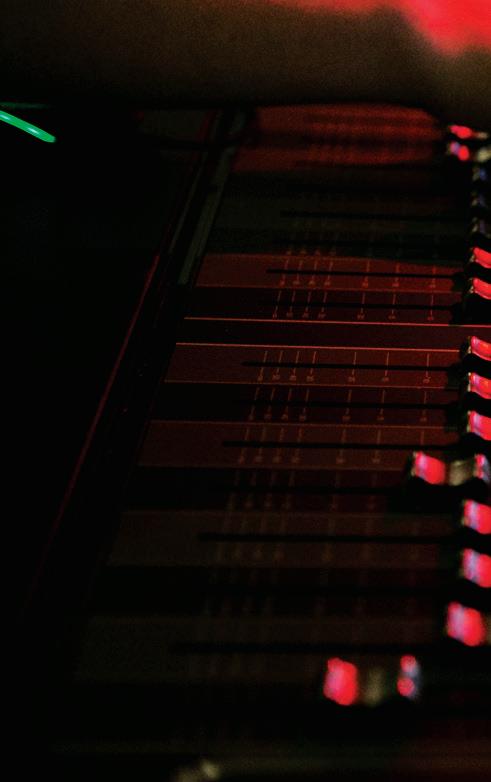
musicians get praised. What often goes unmentioned, though, is the patience and precision required during the album-making process. For music production students at Ohio University, backstage brilliance is where it’s at.
Students new to the School of Media Arts and Studies who are interested in audio production have two tracks to choose from: recording industry or music production. The recording industry track focuses on the business side of music. Students learn how record labels operate, including how they record music, sell it and maintain contracts. Music production, on the other hand, consists of studio work, recording and mixing with analog and digital equipment.
Probel chose the music production side because he wanted to learn more about audio engineering, a multifaceted job that requires analog and digital tech skills, troubleshooting abilities and serious time commitments. He can usually be found in the Radio-Television Building’s recording studio working on class projects.
Now, Probel presses the “talk” button in the middle of the console and points to the recording room through the glass. If there were a band in the room, Probel would be able to route a talkback system through the musicians’ headphone boxes. The signal is
also routed to any vocalists who may be in the isolation rooms. Through the talkback microphone, he can suggest do-overs, ask if instruments are in tune and give other general suggestions. That way, the band can play and receive feedback simultaneously.
Probel uses a combination of equipment during the recording process. Microphone preamps convert the sound from a microphone to a level that is usable in audio software.
Equalizers take different frequencies and balance the levels out, while compressors squash the sound and lessen the range between the loudest and quietest signals. The patch bay, which is the master routing system, features a series of inputs and outputs to connect all signal flow.
“It’s a monster,” Probel says.
Probel says it has taken him a lot of time to understand how everything works. He works with different mixing boards, microphones and software to learn how to create signal flow throughout the studio. One class project consisted of recording a simple acoustic act — mixing the sounds of a guy singing and playing the guitar and bongos.
“We spent a lot of time logically thinking and practicing how signal is being routed,” he says. “Where does a signal start? Where is it going through? You know, listing out every step in the process to help people learn

where this sound is going.”
During another class project, Probel worked with Hawkins and learned how to mic up a full drum set and use vocal overdubbing, a technique that lets performers listen to a pre-recorded song and play a new version simultaneously. Through the sixhour studio sessions, Probel says he and the band learned about the sound equipment, recording process and how to work together to create a cohesive song.
But there’s always something that will go wrong, he says. Half of the job is being able to troubleshoot problems — whether it’s faulty cables and microphones or clashing personalities.
Kyle Snyder, lecturer and outreach coordinator for the School of Media Arts and Studies, echoes that concern. He says the importance of audio production lies in the ability to keep a session running smoothly even when something has gone wrong.
The mixing process can take anywhere from 30 minutes to hours of work, depending on the song and the artist’s vision. For Jason Joyal, a 2016 graduate of the music production program, communication is key. If an artist doesn’t like the first mix of a song, they discuss it, and Joyal takes notes of the critique so they can form a cohesive and satisfactory end product.
Although the technical aspect is vital to audio engineering, Probel and Joyal both emphasize the importance of building relationships with musicians as well.
Probel’s favorite part of the job is meeting different personalities and hearing the stories of how different artists got started in music. Being able to capture those stories and translate them through sound allows inventiveness.
Marcus Meston, a senior in the music production program, compares the job to being a psychologist. He says learning to work with people with different chemistries is the key to creating the best product. The musician and producer have to be comfortable enough with each other to let anything fly and not feel stiff during a session.
“I think good experience is just collaborating with an artist and them really getting on board with your idea and it really
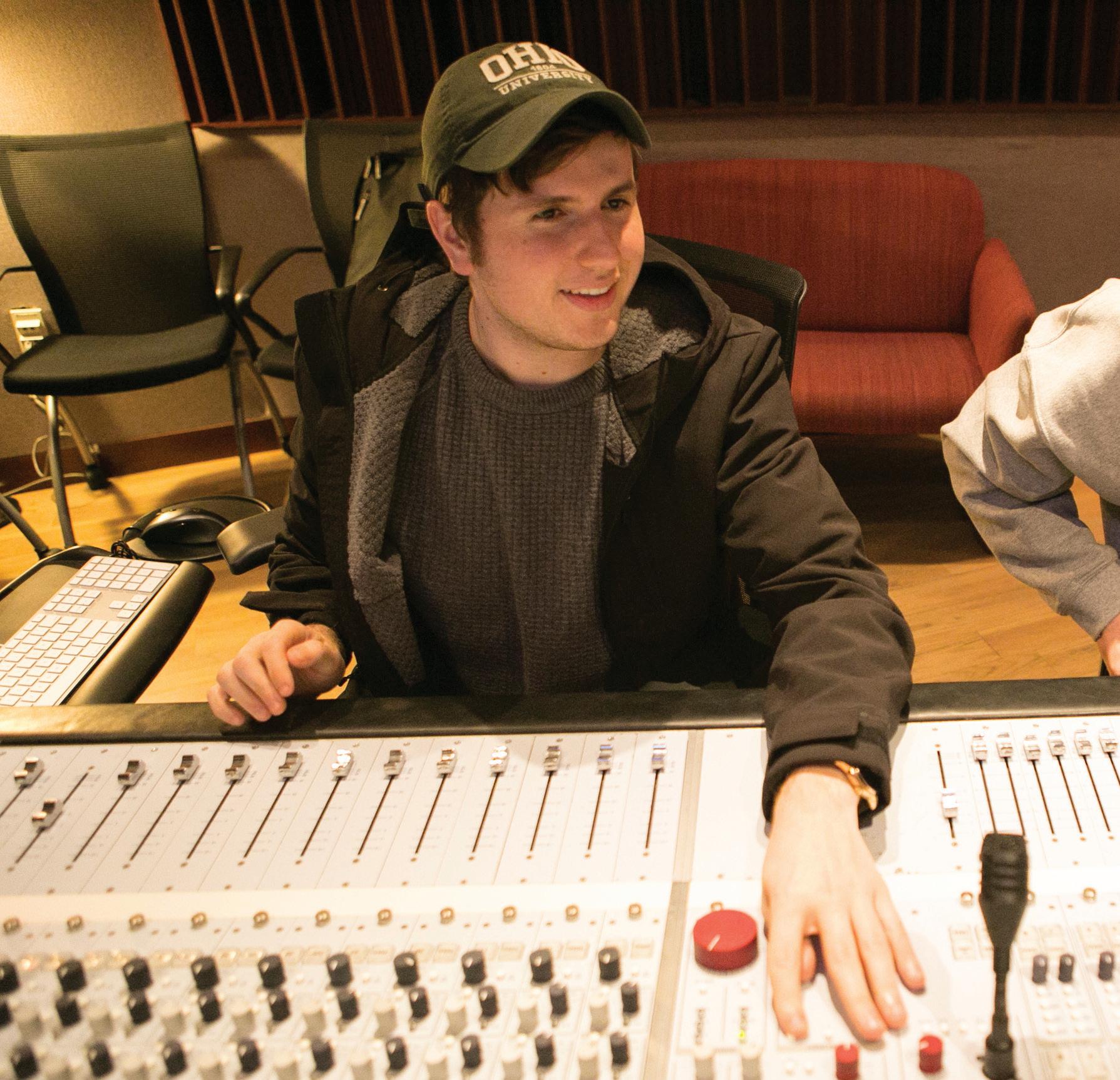
resonating with them,” he says. “And then them taking that creative turn and formulating it into something of their own.”
Joyal says when he comes into the studio, he focuses first on how to make the artist comfortable. To get the best possible studio experience and final product, the artist can’t hold back.
Every artist has a different vision for their music and the audio side plays a big role in making that vision become an attainable product. Joyal, who is now living in Connecticut and working on an album for his band, Tales of Joy, says his job is to understand the essence of a song and to emphasize it within the sound.
During his senior year, Joyal spent the majority of his time working on Taylor Meier and Evan Westfall’s first album. The duo makes up the band CAAMP, which went from performing at Casa Nueva’s open stage events to selling out shows across the country.
On the album, the song “John Henry” has a bluesy feel, which creates the sensation of riding through an Old West desert on the back of a horse. Instead of
keeping the audio clean, Joyal, Meier and Westfall decided to dirty it up and make it sound older by adding different effects to the guitars and vocals. Without those nuances, the track might fall short.
Audio experience has come a long way. In 1877, Thomas Edison created the phonograph using a foil-wrapped cylinder. In 1948, Columbia Records released the first microgroove long-play vinyl record. And today, music is consumed through wireless speakers, headphones and other devices using Bluetooth technology.
In the days of the Beatles, the engineers of the album Abbey Road wore lab coats because audio production was considered a science. Today, the scientific side of the job still remains. Part of Snyder’s job is being an electrician. He leads facility design and construction efforts, including the physical installation of audio facilities.
“Any given day, I’ll be wearing my tool belt and swinging my hammer,” he says. “So, I come from more of the old-school
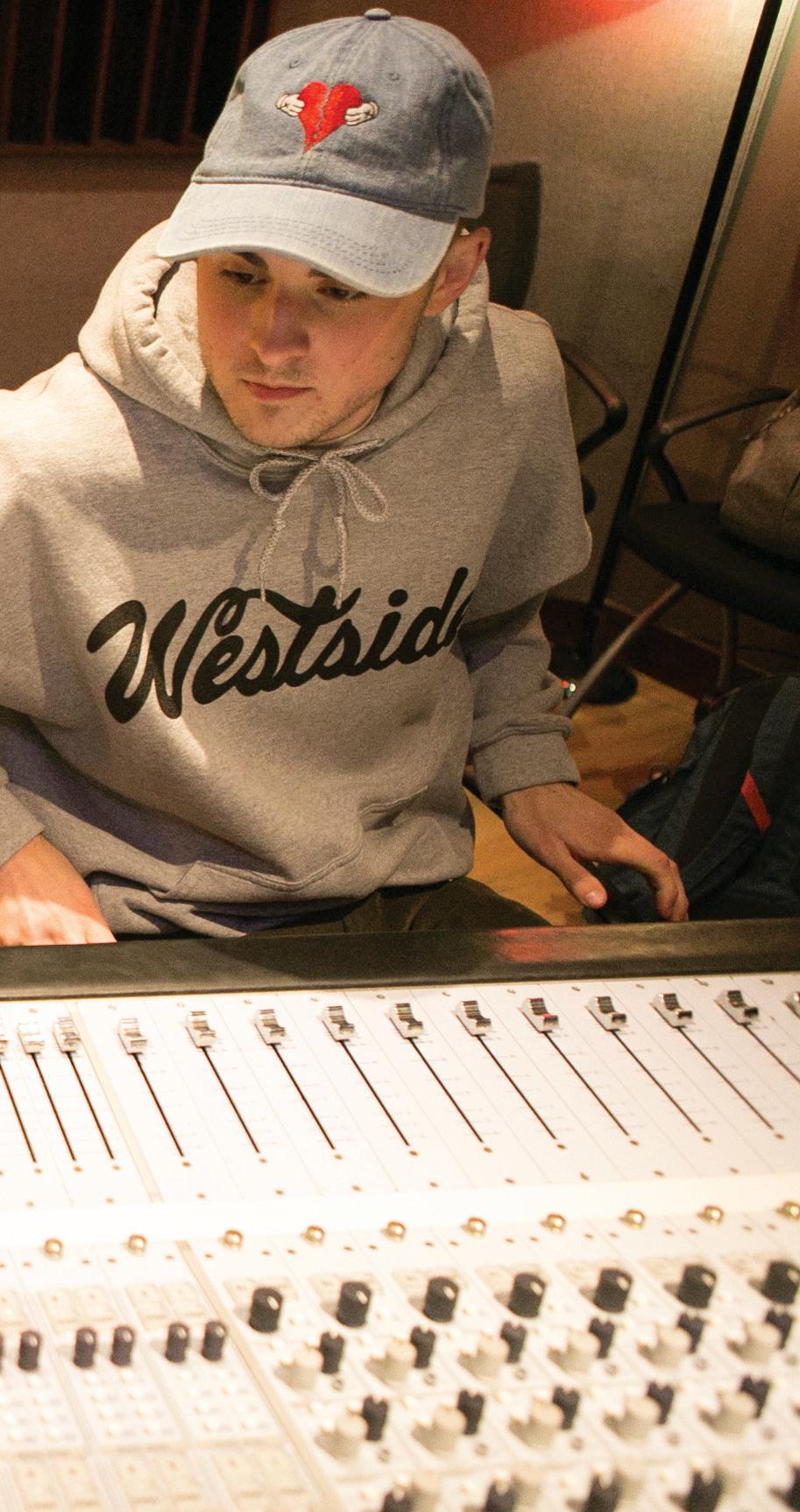
electrical engineering, thinking about audio in the way things used to be.”
Snyder began his career in audio by searching programs through the Audio Engineering Society’s website and found his place at Ball State University in 2003. He says at the time, college degrees weren’t required to get a job in the field and the software and equipment used was more analog than it is today.
But professors in the School of Media Arts and Studies still teach old-school methods using modern tools. Software programs such as Final Cut have a mixer that is analog-based. Snyder says students should be able to differentiate between the channels, inputs and outputs on those systems.
Students’ mentality toward problem solving has also changed. Although Snyder grew up with internet technology, he still wasn’t able to find all of the information he needed online. He often poured through manuals to find answers, and, if he was still unsure, he would ask a friend. Now, students can do a quick Google or Reddit search to
answer their questions.
Average people have the ability to create their own albums using programs such as GarageBand, which comes as standard software on every Apple computer. But Snyder says there’s more to music production than that universal software.
“Everyone is aware there’s a technical aspect to it,” he says. “But it’s important to appreciate there’s sort of a higher level of thinking that goes on.”
Employers still seek graduates who learned the way they did, he says. They want self-starters who are willing to put in the work and find answers to their own questions.
Although an understanding of analog is important, Snyder kept up with the transition to digital. His extensive knowledge in facility design helped him in building the two newest studios for the Media Arts and Studies program. The most recent is the Audio Post Production and Critical Listening room, which is located on the fourth floor of the Schoonover Center for Communication.
The room is geared toward audio for film, and it allows students to practice dialog recording and sound effects. One room includes six folly pits, which are chunks of the ground that are taken out and filled with sand, rocks, sticks and other materials. Students can step on those surfaces or drop objects on them to create sounds for film projects.
“Whether it’s audio for video, film, iPod, iOS games, Android games, console games — think audio for [virtual realty] and [augmented reality] — we are never going to need less audio,” Snyder says. “It’s just, what is that audio for?”
Sound is everywhere. It’s incorporated in every piece of media, besides text and images. But most people go through their days without thinking about what they’re hearing. Probel says most of the time, when audio is done right, people don’t notice. But when it’s done incorrectly, everyone notices. A song with crackly audio or a film with bad sound effects? That’s just unbearable, he says. Snyder believes it’s important for people to understand and respect each other's careers.
“I do a lot of things, but I can’t plumb
well. I can’t fix a car. I can’t lay carpet for shit. I don’t know much about psychology,” he says. “There’s a lot of people who do a lot of great things.”
But the precise work of producers and engineers is often overlooked. Probel says the average consumer isn’t worried about who’s recording a song, who’s in the studio mixing dialog and music for a film or who is setting up microphones, stands and amplifiers for a rock band. People generally have more of an interest in who they see in the spotlight.
“I feel like [producers] get more attention in the rap and hip hop scene where people are making beats, and it’s the big name rap artists and all that,” he says. “People are like, ‘Who produced this song?’ or ‘Who’s making beats with them?’ ”
Meston has been personally producing the indie pop band Clubhouse through Brick City Records, a capstone class he’s been a part of since August.
He’s in the studio with Max Reichert, lead singer of Clubhouse, working on an untitled track. This session, they are tweaking the chorus vocals.
Reichert is in the recording room, standing at the mic. He puts his headphones on and bobs his head back and forth in fluid motion. He sings the same two lines more than 30 times to get the ideal sound.
Meston stands at the control board, looking through the glass. He presses the talk button.
“I like the ends of notes you have at the end of phrases that swoop down,” he says. “Continue with that. It sounds great.”
Reichert repeats the process.
“I like that melody going up too,” Meston says. “Out of anything, nailing that is the thing we need to get.”
The untitled track that they’ve been working on since November is almost complete. It has taken time, precision and collaboration on both ends.
Meston says people typically listen to music to appreciate the song. Most people aren’t aware of what goes on behind the scenes, but if they want to appreciate that aspect, they can.
“It’s the artists’ work, so they absolutely deserve the credit,” Joyal says. “I think that mainly all engineers and producers aren’t in it for the credit but for the love of music and helping others achieve their musical goals.” b

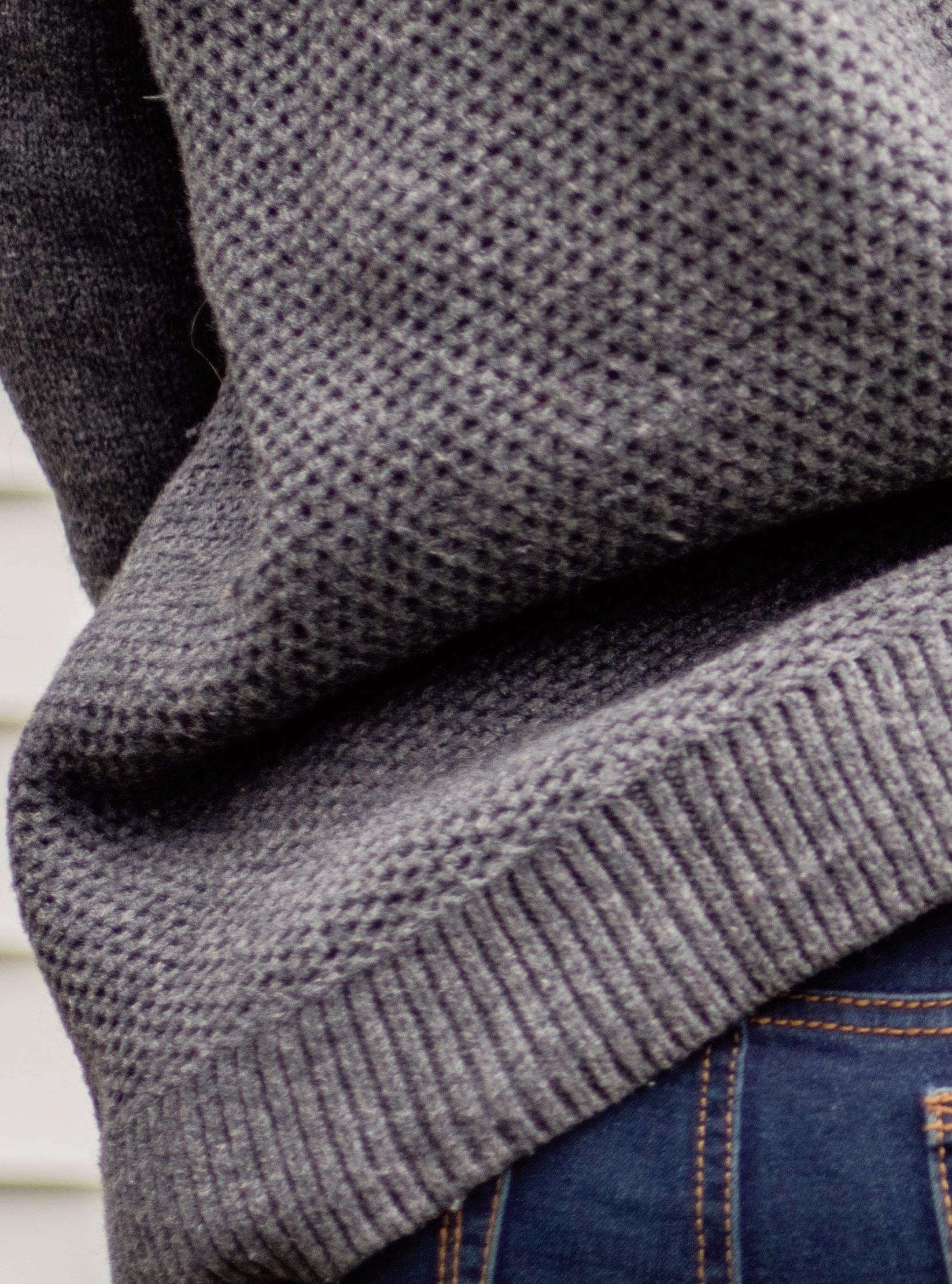

UUniversities in Ohio were recently given the opportunity to choose whether to allow concealed carry weapons on their campuses. Although colleges have handled the issue in a number of ways, Ohio University students and staff had the chance to participate in the decision-making process.
Part of the Student Senate Constitution passed through last year’s senate allows for a referendum that polls the student body. The first issue Ohio students voiced their opinions on through the referendum was the proposition of new concealed carry laws on campus, passed through Senate Bill 199 in late December to be put into effect on March 19.
Senate Bill 199 has several elements related to concealed carry, but two specific provisions that pertain to college campuses.
The bill gives the boards of trustees at public institutions the right to recognize concealed carry if they so choose. If the board chooses not to, then concealed carry licenses will continue to not be recognized on campus. The board of trustees could make a policy saying concealed carry licenses would be recognized, whether they want to approve the licenses on a case-by-case basis, or have a blanket approval for those eligible.
The second provision minimizes the extent of punishment for those found with a concealed carry weapon. Previously, if someone was caught using a concealed carry on campus, it would have been a felony, but it is now a misdemeanor. The board of trustees does not have to approve that provision. Although students do not have a say in whether that happens, they do have a say in whether the board of trustees addresses the bill. The results of the referendum were translated into votes within the senate body which resulted in a resolution sent to the board of trustees.
“We saw this as a really big issue that would potentially impact every student on this campus- not even students but everyone,” Student Senate President Hannah Clouser says. “Our constituency group is specifically students, so we wanted to reach out to them.”
After Student Senate held an open discussion during one of their meetings in January, Clouser thought it seemed as though positions for and against were split evenly.
“Different concerns were expressed for different constituency groups but it seemed to be at that meetings split,” Clouser says.“We heard good arguments and good points made from both sides, often being essentially rooted in the safety and freedom of individuals. Depending on what side is depending on what you saw as safe and what you saw as free.”
After David Parkhill, president of the Ohio University College Republicans, attended the discussion, he felt his group had been overshadowed by those opposed to concealed carry.
“A lot of this was, from what I saw, gun owners versus people who had never been around guns,” Parkhill says. “… Even as we try to navigate that debate, any more in our generation people are just so one-track minded and even if there are hundreds of statistics that prove why it works, they’ll find one statistic that makes sense as to why they shouldn’t, they’re going to hold onto that for dear life.”
The referendum gathered responses from 6,940 students from both Athens and regional campuses — three times more than the number of people that voted in last year’s Student Senate elections. Sixty-five percent of students who participated urged the Ohio Unibersity Board of Trustees to take no action, and not recognize concealed carry policies on campus. Those votes were combined with the Student Senate vote results, which resulted in a total vote count of 23 against and 65 in favor of the status quo.
Although the referendum had the largest voting turnout of all other Student Senate elections, less than 25 percent of the student population voted on the issue. The resolution may have passed, but concealed carry remains a divisive issue
among students and faculty.
Almost 95 percent of the referendum vote came from Athens students. Clouser says although Student Senate made an effort to reach out to regional campus students via email, they were not able to canvas the way they did on the Athens campus.
In addition to the lack of response from regional campuses, the results from those campuses were all in favor of the new concealed carry policies. Sam Miller, president of Ohio University College Democrats, says although it's important to recognize the results from regional campuses, main campus students’ opinions should be more weighted.
“It’s really hard to understand the situation as a whole when you’re maybe on your campus just for your one class and then you go home or go to work,” Miller says. “As for us, we are on constantly walking around on campus. We live here.”
Although regional campuses may have voted differently than Athens, different universities in Ohio generally had the same consensus: do nothing.
The Ohio State Lantern reported Ohio State University's Undergraduate Student Government passed a resolution stating its opposition to concealed carry on campus. That decision aligns with that of OSU President Michael Drake, who said during an interview on WOSU’s “All Sides with Ann Fisher” that he opposed concealed carry on campus before the new legislation was passed and after a knife attack that occurred on campus in November.
More than two-thirds of the University of Cincinnati’s Student Senate voted in opposition of concealed carry on campus. Mitchell Phelps, UC undergraduate student body president, told the Cincinnati Enquirer it was "a packed meeting with many students who attended to speak out on behalf of both sides of the argument." The UC Faculty Senate passed a resolution opposing guns on campus in February 2016, and reaffirmed that opinion in December.
Notre Dame College spokesman Brian Johnston said in an email to the Cleveland Plain Dealer that the Board of Trustees would discuss the issue during their upcoming meetings.
"Prior to that, College administrators
“ If people can’t handle their own keys or phone, I definitely don’t feel safe knowing that they might have weapons. It just seems like an unnecessary thing to add into the environment.”
Parker Smith Brown Hall Resident Assistant
and our chief of police will meet to discuss the matter and consider recommendations for Board discussion,” he wrote.
Miami University had a similar outlook on the new concealed carry policies. However, it addressed the issue early on in the decision-making process. In early December, before the bill was signed by Gov. Kasich, Miami sent out a news release saying the school “does not permit the carrying of concealed weapons on campus and no changes are being considered.”
Other universities such as Kent State, Xavier, Bowling Green and community colleges across Ohio also decided to take no action regarding the new state law. Many schools released statements shortly after the legislation was passed announcing their plans to maintain their existing bans on concealed weapons.
Many different constituency groups at Ohio University voiced their opinions on the matter, including the graduate and faculty senates, Second Amendment Club, international students and resident assistants.
Parker Smith, an RA in Brown Hall and a sophomore studying political science, says after observing the lack of responsibility drunk college students sometimes have, he would not feel safe with those students having a concealed carry weapon.
“Honestly, people lose their keys and their wallets and their phones all the time and pass out in the bathroom or outside their door and can’t get in,” Smith says. “… We’re in a setting where there’s just a ton of young teenagers living together and they are very irresponsible and there’s lots of alcohol around all the time. If people can’t
handle their own keys or phone, I definitely don’t feel safe knowing that they might have weapons. It just seems like an unnecessary thing to add into the environment.”
Parkhill did not see alcohol being an issue for those who carried a concealed weapon. He says as an Eagle Scout and someone who knew people who grew up with guns, people generally don’t get drunk and then decide to play with their guns.
“It’s just not something that happens,” Parkhill says. “You don’t break out the booze and break out the guns. That’s just a mixture for horrible decisions.”
Although the issue of concealed carry weapons in residence halls was frequently addressed, many proponents of concealed carry on campus noted that to obtain a concealed carry permit, the applicant must be 21 years old.
In addition to that rule, applicants must pass eight hours of concealed carry classes, pay $67, pass a criminal background and mental competency check, and have their fingerprints electronically scanned.
The Ohio University Board of Trustees has not discussed whether or not to allow concealed carry on campus. Despite the student population's differing views, all five senates at Ohio told the board they should not take action on the proposed changes. “In my opinion, if a mass shooting occurs here, the Board of Trustees is the only one liable. The government is no longer liable,” Parkhill says. “You can’t sue the state for not allowing you to carry. Now you can sue Ohio University for not allowing you to carry. … We’ve presented our facts; the students have spoken.” b
Ohio students voiced their opinions through the referendum on new concealed carry laws on campus, passed through Senate Bill 199 in late December to be put into effect on March 19. Here's how it would affect campus.
The bill gives the boards of trustees at public institutions the right to recognize concealed carry if they so choose.
The bill minimizes punishment for those found with a concealed carry weapon from a felony to a misdemeanor.
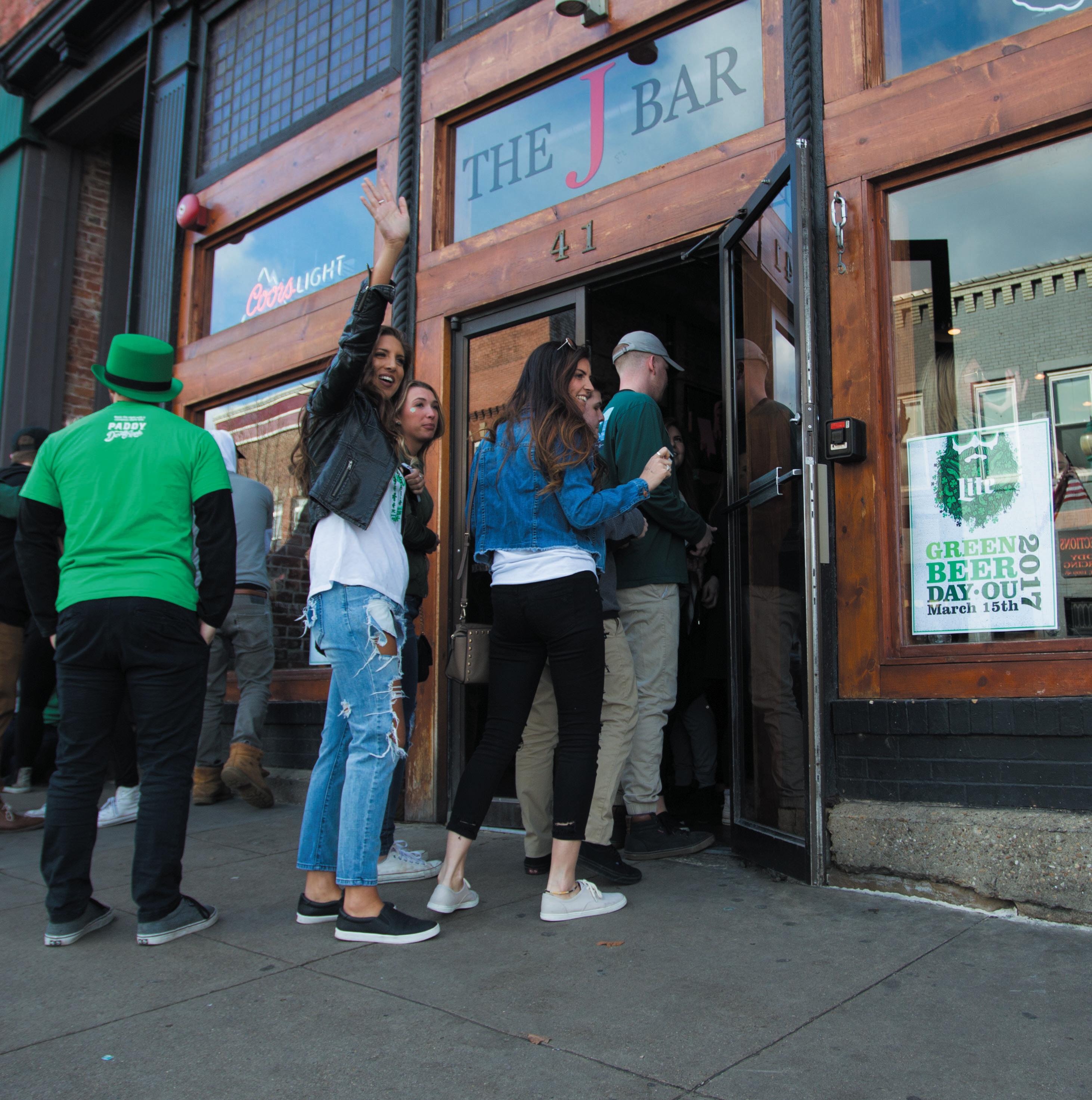
on March 15.
From knocking back green beers to sharing traditional Irish dinners, students and residents celebrated St. Patrick's Day in style.
PHOTOS BY SARAH WILLIAMS
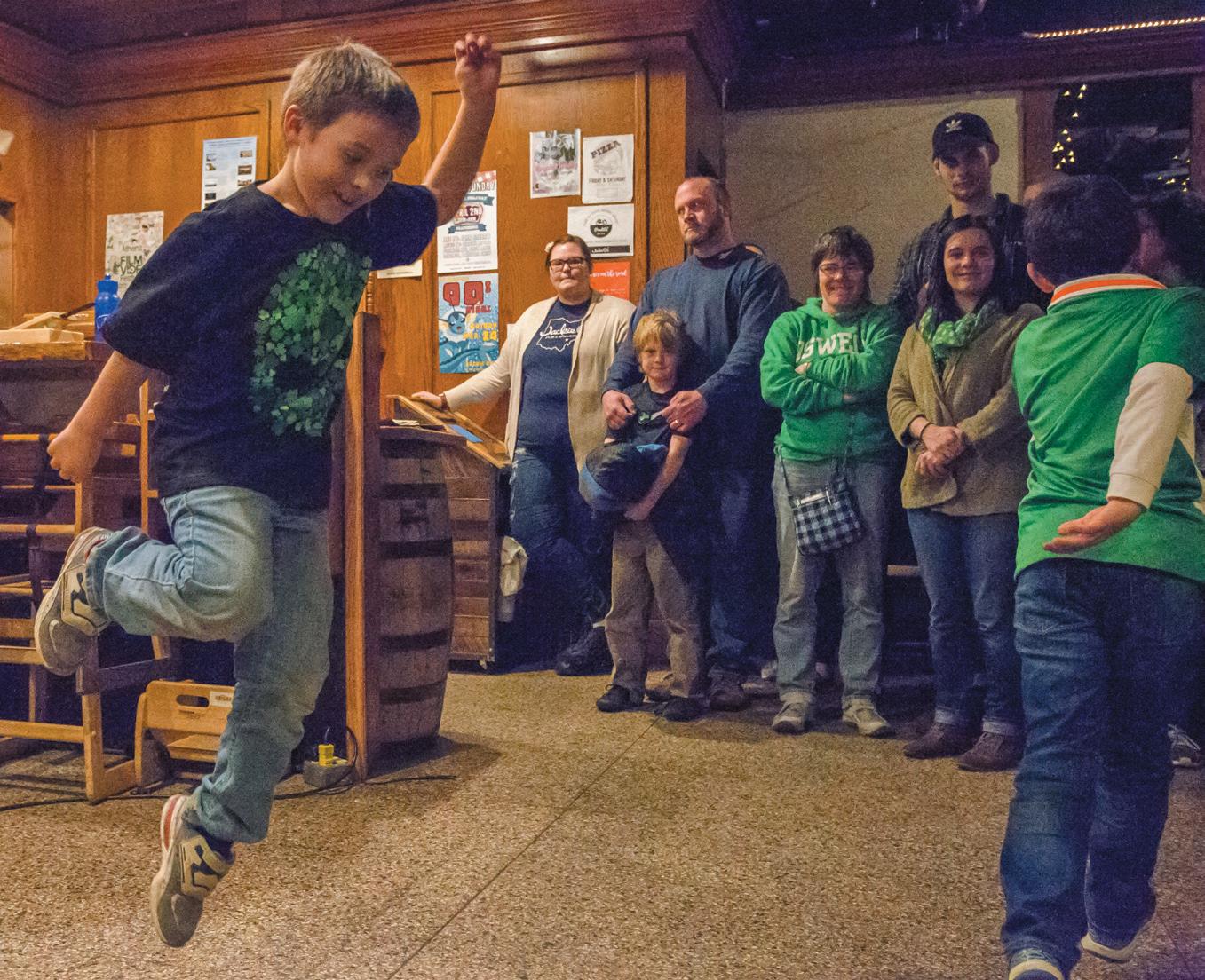
Jason “Jay Jay” Shaffer, 6, dances to live music as he waits for the dancers from Ohio Valley School of Celtic Dance to take the stage at Jackie O’s Pub and Brewery on March 17.
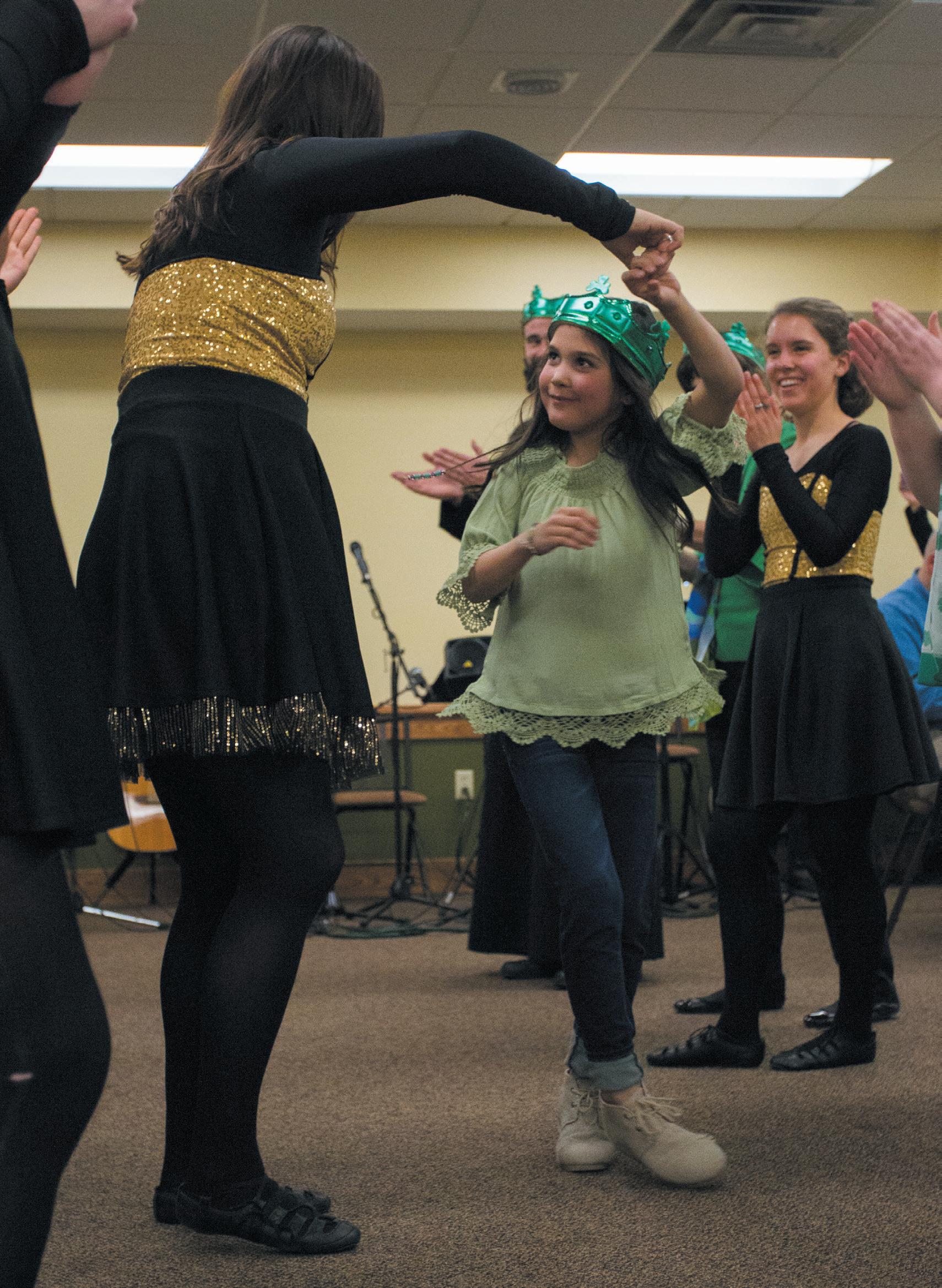

(left to right) Mollie Chockreff, Rachael Roman, Ashley Deck, and Gabby Shipta celebrate Green Beer Day at The Pigskin on March 15.
Juli Miller passes food around the table at the Christ the King Catholic Church St. Patrick's Day dinner on March 18.
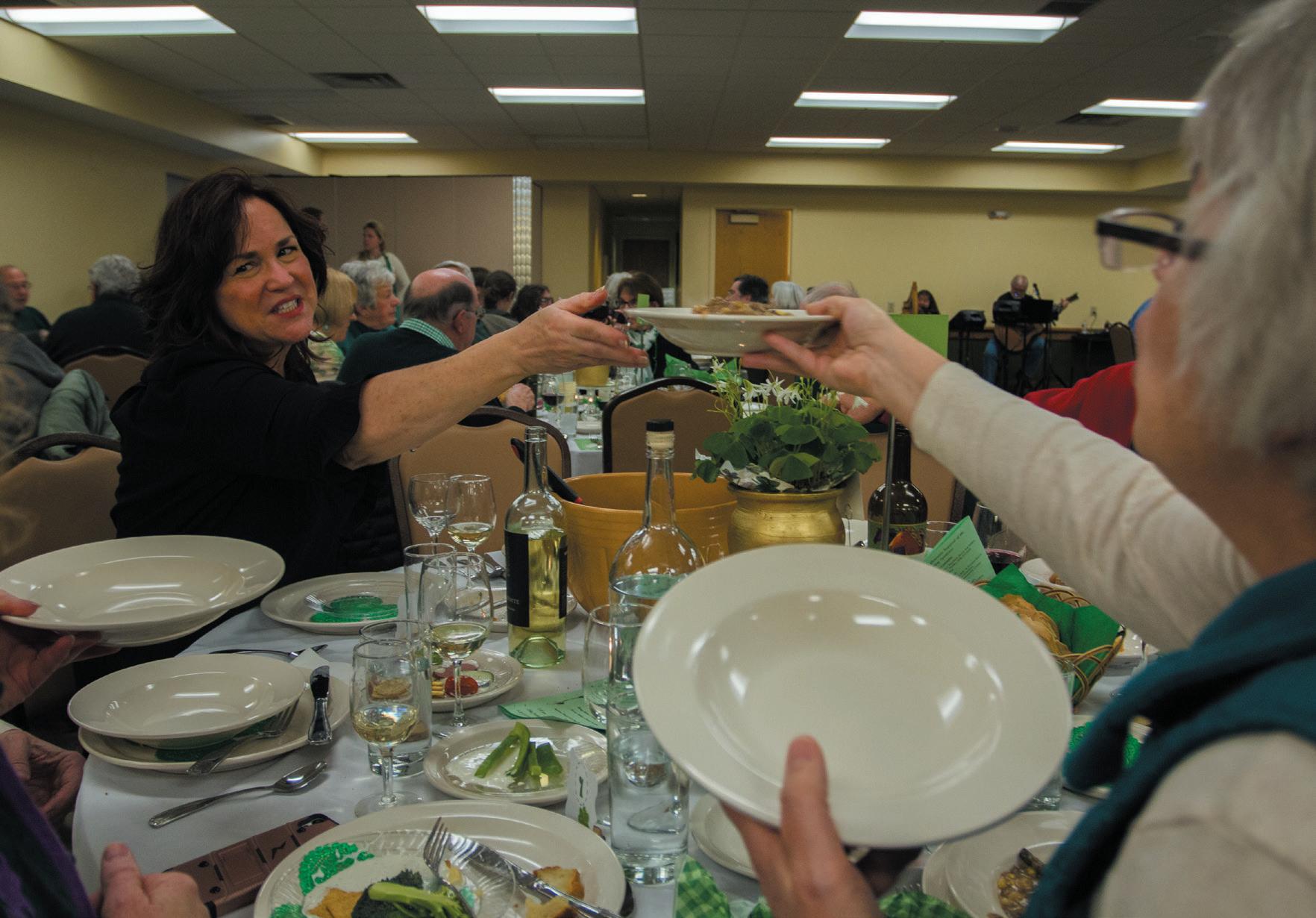
Check out these events happening around Athens this spring.
BY KATIE KINGERY
Ohio University Seabury Quinn Jr. Playwright’s Festival | April 12-22
Each year, Master of Fine Arts students at Ohio University present a collection of short scripts to be read, workshopped and performed at the Playwright’s Festival. This year, two new full-studio productions will be performed at the Forum Theater: TheBigFuckin’Giant by Rachel Bykowski and This is How You Got Me Naked by Catherine Weingarten. Student admission is free thanks to The Arts for Ohio initiative.
#15Fest | April 21-22
Wrap up fest season with performances by Migos, Young Thug and Jauz at Number Fest. Located at the Venue of Athens, #15Fest will feature 27 acts over the course of the two-day music festival. A bigger audience than last year is expected for this year’s strong headliners, and overnight camping and extra stage space will take this show to the next level.
Apollo 13 at the Athena Cinema | April 18
This spring, the Athena’s Science on Screen program features a viewing of the film Apollo13 , a dramatization of the failed lunar mission in 1970. Take advantage of free student admission and watch how Tom Hanks, Kevin Bacon and the late Bill Paxton fight to survive the trip back to Earth. The Dean of Russ College of Engineering and Technology Dennis Irwin will host a discussion after the movie.
Softball vs. Miami | April 28-29
Support the lady Bobcats as they face off against the Miami Redhawks for the first time this season. This will be the team’s final home series before the Mid-American Conference Tournament in Akron, Ohio, which Ohio hasn’t won since the 2013-14 season.
The Nelsonville Music Festival | June 1-4
The Nelsonville Music Festival is a great way to jump in and experience southeastern Ohio during the “off-season.” Enjoy the four-day festival filled with headliners such as Parquet Courts, Emmylou Harris and Rodriguez.




























WWomen struggling with addiction benefit from a Southeast Ohio recovery program.
BY MICHELLE JACOBSON | ILLUSTRATIONS
hen she was 23 years old, Moriah Haught realized she needed to break free from the downward spiral of her drug addiction. She fell into the party scene in high school, continued using drugs and alcohol in college and eventually regularly used heroin and other drugs. After she was arrested in 2015, Haught acknowledged that she needed to make a change in her life.
Haught joined the Rural Women’s Recovery Program (RWRP) in June to regain control over her life.
RWRP is part of Health Recovery Services, a private nonprofit corporation based in Athens. RWRP caters to its clients’ recovery needs with a gender-specific approach to care. The program, which has been serving com-
munity members for 35 years, is a tranquil healing space for women struggling with addiction. The entire staff, which consists of the program director, nurses, physicians, therapists and counselors, provides a supportive and safe environment for the women to create support networks.
“It was very relieving to work with the whole team,” Haught says. “You get to a point where you trust them more than you have ever done before. They want to help you and help you focus on that area of your life.”
According to RWRP’s website, research shows that addiction is not defined as an “island,” which means it doesn’t stand alone or isolate itself from other aspects of an individual’s life. To address that concept, the program uses a holistic approach to recovery, which includes ad-
dressing the physical, emotional and spiritual elements of addiction.
“This program is considered stabilization,” says Cathy Chalek, the RWRP program director. “That is her first step to recovery. [The program] encompasses the spirit of Athens, which is a healing community.”
The program accepts women from all 88 Ohio counties. Those who are involved in the program are there from 90 to 120 days and reside in one of the facility’s cabins throughout the duration of their stay. If a woman is pregnant when she enters the program, she will stay until the baby is born, plus an additional month following delivery.
“The time frame for the mother assures that the child is not harmed,” Chalek says. “We want to make sure that there is a structure for them to take care of their baby.”




“Everyone is worth saving and everyone deserves another chance. No one is ever too far gone.”
Moriah Haught Rural Women’s Recovery Program participant
The structural component of the program is also tied into the client’s day-today schedule. RWRP’s treatment plan is integrated into the 12-step program of Alcoholics Anonymous for recovery. With that approach, the team focuses on healing a variety of areas in a woman’s life. The program provides educational groups, art and expressive groups, nutritional classes and medical attention — a treatment approach that addresses the mind, body and spirit.
“We are very involved with each client,” says Amanda Dickson, one of the RWRP’s licensed practical nurses. “I’m getting to know these women here and I am learning a whole new aspect of nursing.”
The medical team holds consultations with each woman on a daily basis for overall assessments. There are also group sessions held once a week, which are led by the program’s nurses or physicians. During those collaborative meetings, the medical team teaches each client about how drugs affect the body and types of diseases that may result from drug use. One of the most common diseases that develops among women who are addicted to opiods is hepatitis C, which is spread through the sharing of needles. Other topics that the group focuses on include safe sexual practices, coping skills and prenatal care.
The prenatal component is especially important because there can be a number of complications for children who are born with an addiction problem. Babies born with addiction face consequences including behavioral issues, as well as digestive, hearing and breathing complications.
The nurses and physicians often begin working with clients once they are out of detox, which usually occurs after three to six days. Clinical staff members work with the women to teach them how to manage their mood swings and depression and how to deter their specific addictions. Physicians
also use a technique called tapping, which involves applying pressure to specific parts of the body to relieve anxiety and stress.
“The women will come to us for medical information, such as their diagnosis, what to expect and what their [bodies are] going through,” Dickson says. “Sometimes, they just come in to sit down and talk because they need someone there to listen.”
RWRP’s specialized teams work together to stabilize women’s lives. The core groups teach the women imperative life and recovery skills to help them pursue their goals. Addiction impacts women differently than men due to biological differences and societal pressures, so it’s important to integrate a gender-specific approach to care because it allows women to examine and understand the true cause of their addiction or substance abuse problem. The National Institute on Drug Abuse reports that women describe unique reasons for using drugs, including weight control, exhaustion, coping with pain and selftreating mental problems. They also gain life skills through their work with other women in the art therapy and community outreach programs.
“Connection with others in recovery and transformation from a state of addiction to one of openness to inner feelings is important to living drug and alcohol free,” Chalek says.
Haught spent four months as a member of RWRP, and the program helped her gain freedom from her addiction. It taught Haught how to respect others, express her feelings and overcome challenges. After graduating from RWRP, Haught became a behavioral health technician, got married and started a family. Haught will soon earn her degree in early childhood education.
“No matter where we come from, it can be good,” Haught says. “Everyone is worth saving and everyone deserves another chance. No one is ever too far gone.” b
According to the National Institute of Drug Abuse, 15.8 million women ages 18 and older used illicit drugs in 2014.
Menstrual cycles and other hormonal imbalances often affect how women react to substances, making them more prone to drug cravings and more likely to relapse after treatment.
Sex hormones can make women more sensitive than men to side effects of drugs.
Women who use drugs are more likely to experience physical side effects from drug use on the heart and blood vessels. HEART HEALTH
Women who use certain substances are more likely to experience panic attacks, anxiety and depression. MENTAL HEALTH
Source: National Institute on Drug Abuse
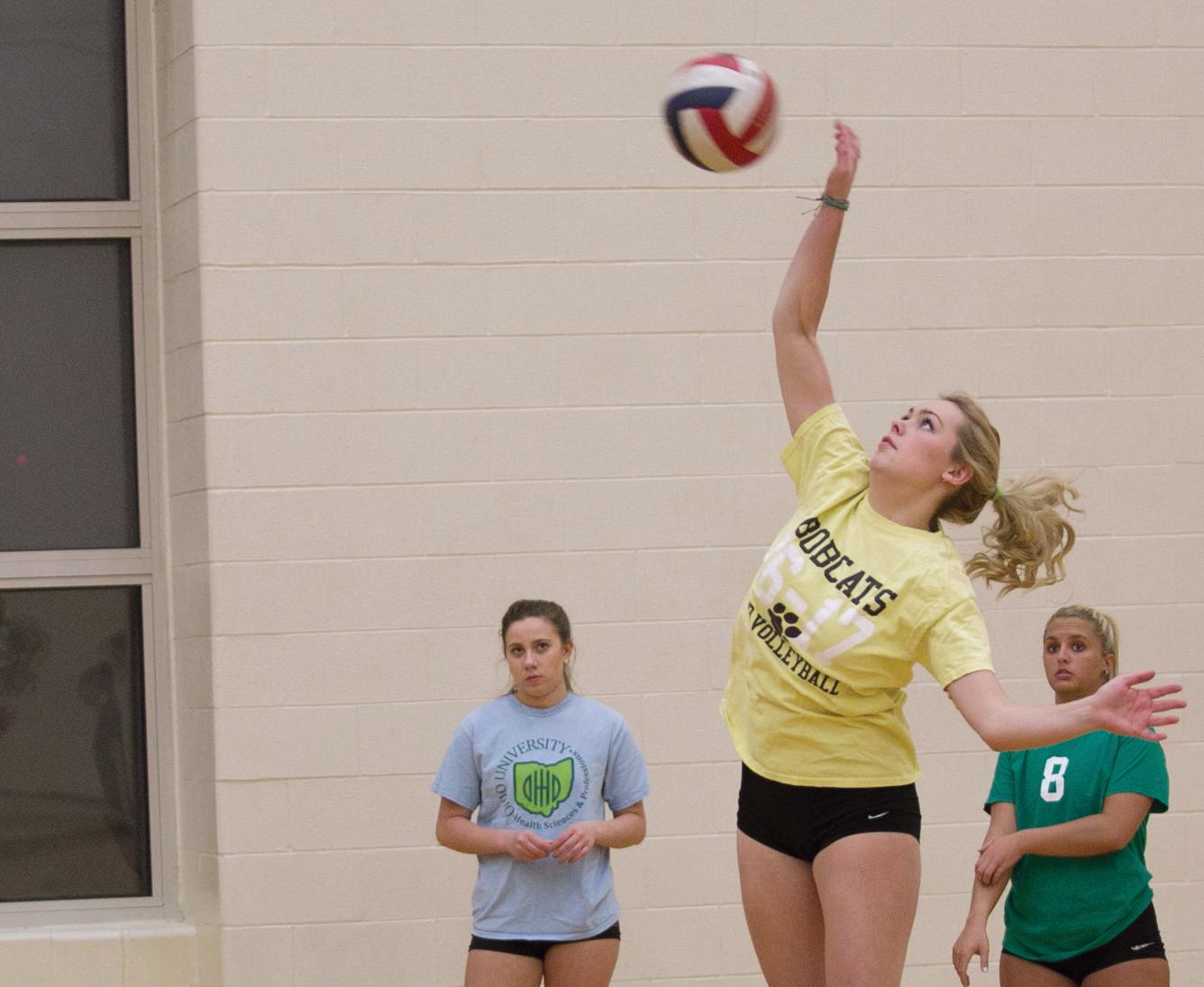
The Ohio University women’s club volleyball team works to reclaim a national title.
BY BRIANA EKANEM | PHOTOS BY MADDIE SCHROEDER
In 2013, the Ohio University women’s club volleyball team won a Division IAA National Tournament title at the National Collegiate Volleyball Federation Championships in Dallas, Texas. Since that monumental win, the subsequent squads have come to expect that their members will carry on the team’s winning reputation.
“I don't particularly appreciate living in the past,” team president and junior outside hitter Rachel Teed says, “but I know why the girls like to reflect on years past:
we were incredibly successful.”
The 2015-16 team set the bar high for this year’s squad after a Gold Bracket finish in Division IA in NCVF Championships in Kansas City, Missouri. Despite facing a few challenges with membership and scheduling that often come along with the structure of club sports, the 2016-17 squad hopes to repeat the pattern of success during this year’s tournament when it returns to Kansas City for the 2017 NCVF Championships.
“Every year is different,” Teed says.
“We won't know who we will recruit, who will quit and who will improve throughout the year.”
Ohio club sports offer student athletes a flexible alternative to the year-round demands of varsity athletics. Club teams are less competitive and, unlike varsity athletics, there aren’t binding incentives to keep members on the team such as scholarships or NCAA guidelines.
“The commitment to the team is really what you make of it,” senior middle blocker Haley Dake says. “We practice twice a
week for two hours and compete in three tournaments per semester. There have been girls who have had to leave the team due to conflicts with school, but there are usually people who have demanding majors like nursing or engineering.”
Most club sport athletes juggle classes, work and other extracurricular activities with practice and weekend tournaments, and for some, the best option is to take a semester off. The club volleyball team faced that issue this year when the initial president for the 2016-17 season, Emilie Kipp, accepted an internship for spring semester. Because club level teams do not require coaches, the president takes on the role of a coach if needed. Teed was originally voted vice president for 2016-17, and although the team considered all options to fill the leadership void, Teed was the leader they agreed upon.
“Now I stand as the president of the club, and I think it is more of an accomplishment, at least more than I had intended for this year,” Teed says, “but I am extremely happy with it.”
Changes in leadership are rare but not unheard of for the club volleyball team. The team has even had members of the Ohio varsity volleyball team transition to the club level to maintain a less demanding schedule while continuing to play the sport they love.
“Obviously, club is a little bit more relaxed, which was a nice change of pace for me,” Hannah Burkle, a 2016 graduate, middle blocker and outside hitter, says. “I went from practicing and playing every single day non-stop to only a couple practices a week and not as much travel, which was the perfect amount so I could still focus on finishing up school.”
Burkle joined the Ohio volleyball team in 2012 and was a member of the MidAmerican Conference regular season championship team during her three years on the squad. Burkle posted a career high of 183 kills and 431 total attacks in 2014. Although her eligibility ended for the varsity team, Burkle opted to continue her education at Ohio for a fifth year and try out for the club volleyball team to continue playing while she finished her classes.
“It took some time to get used to the fact that my life didn't revolve around my hectic schedule anymore, which I was fine with,” Burkle says. “I think
club gave me a lot more freedom to do whatever I wanted with my time compared to varsity, it was all volleyball all the time with some classes thrown in there.”
“
I think that victory leads to wanting to win as a team and encouraging one another.”
Rachel Teed Team president and outside hitter
That leaves the president and other executive members in charge of scheduling and checking in with each player throughout the season.
“In college volleyball without a coach, it's hard to find things to motivate the girls to have the ultimate drive to win,” Teed says. “Everyone of course wants to win, but when the girls are loud and show it on the court, that's when we do our best.”
As the club volleyball team prepares for nationals, its competitive mindset becomes
imperative to experiencing success, especially with the results the squad has been able to produce in years past.
More than 400 teams from around the country compete at the NCVF Championships. The tournament is broken into three divisions and split between women’s and men’s volleyball. The NCVF also ranks teams in each division based on that year’s tournament results. Ohio was listed in the top 25 in both 2015 and 2016 and may make a run at this year’s rankings after beating 15 squads in a tournament at University of Dayton on Feb. 25.
“I think that victory leads to wanting to win as a team and encouraging one another,” Teed says. “I have seen this firsthand and it's really exciting to watch and be a part of.”
With a recent tournament win and a hunger for more, the women’s club volleyball team is looking to make big strides during the weeks that lead to nationals. Despite adversity in leadership roles, balancing challenging schedules and changes in personnel, the squad hopes to continue the winning trend.
“I want to do the best that we can do to our full potential,” Teed says, “and if that is winning silver or bronze or even getting into gold and going far, I will be proud of our team, because nationals is a time to kick ass and be intense and I think that all of the girls know that.” b
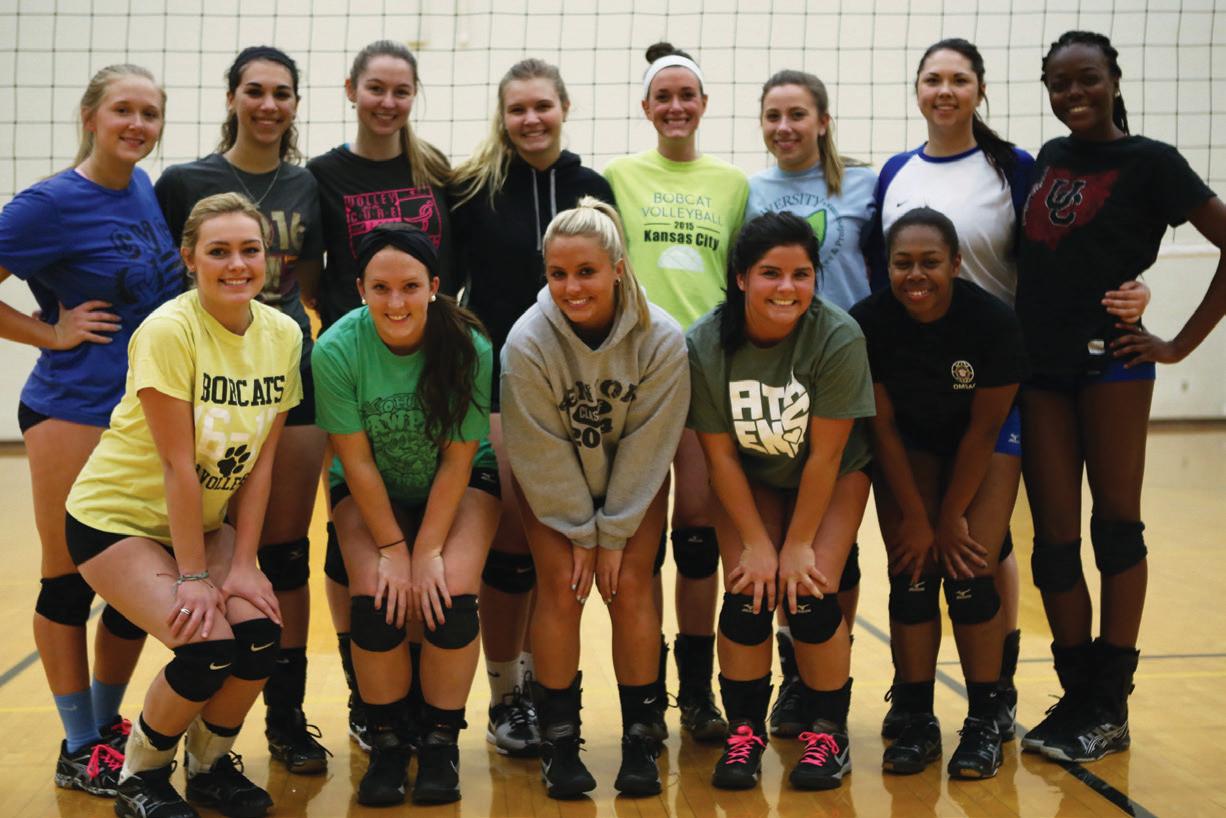

The truth about what lies within the tunnels that run under Ohio University’s campus.
STORY BY MACKENZIE SMITH
From escaped psychiatric patients to connected fraternity basements, rumors about the tunnels beneath Ohio University’s campus have been passed down by generations of students. Sections of the tunnels date back to the early 1900s, so it’s no surprise that students and alumni have trouble differentiating between fact and fiction.
Rumors about the tunnels began to circulate after the university instituted a strict access policy in the 1950s, which limited tunnel access to trained maintenance workers. Is the reason for university-only access due to the tunnel’s age and instability, or is there another motive for keeping students out?
There is a secret room and a false wall in the ZTA house and in the basement I saw a section of wall that had been repaired from what had been the tunnel entrance,”
EVAN BROWN, 1980 GRADUATE
Though some of these legends might never be confirmed, one horrifying claim about the tunnel proves to be more than just a scary bedtime story. It was in the dimly lit tunnels that a robbery and brutal murder took place in 1983. The facts about the murder are sometimes imprecise, and details such as ages and names vary in news reports. Some details about the murder still remain a mystery, which allows urban legends to fill in the gaps. Despite some disputable details, the baseline of the story is clear: a man was murdered in the tunnels that lie beneath the university’s sidewalks and buildings. At Ohio, students usually spend the first week of October nursing their Homecoming-induced hangovers and preparing for upcoming Halloween festivities. One student spent the first week of October 1983 making statements to the police about his missing roommate.
WHEN: October 1983
WHERE:
The body was found in the tunnels underneath East Green.
WHO:
An exchange student from Libya was killed by two acquaintances.
I heard that when the Ridges still operated as an insane asylum, some of the patients escaped through the tunnels,”
JILL LUCAS, 2015 GRADUATE
The student reported that his roommate, an international student, had been missing since the beginning of October when he did not return home one night.
The events following the missing persons report seemed normal until approximately three weeks later when a strong odor with no identifiable source began to plague the students of East Green. It was a shock to the entire Athens community when two Ohio maintenance workers found a decomposing body in one of the steam tunnels near McCracken Hall on Oct. 25, 1983.
The male victim, whose age is listed as both 24 and 29 in varying articles about the crime, was found with a head injury, 11 stab wounds and a slit throat. The assistant director of university security, Bill Kane, identified the body as Ali Bulgasem Ali. The body matched the missing person report filed three weeks earlier. Bulgasem Ali was an international student from Libya studying geology.
After launching a full investigation, the supposed story of Bulgasem Ali’s untimely death was revealed. It is believed that Bulgasem Ali spent his last night at a bar Uptown, and after he left the bar, he was intercepted by two men, Merlin Ryan, a 19-year-old Ohio University student, and Ralph Prather, a 22-yearold Athens resident. The three men were friends and were often seen hanging out together at an uptown apartment, though Prather was known for his rootless living style — sometimes sleeping
[One of my friends] said that rumor was there were tunnels below the [fraternity] house, and back in the day, during the underground railroad time, someone died under there,”
SARA DAUERMAN, 2015 GRADUATE
on roofs or in the underground tunnels. According to an article about the murder in the 2013 fall issue of Backdrop magazine, Ryan and Prather urged Bulgasem Ali to join them and “smoke some dope” in the tunnels before returning to Lakeview Apartments later that night. It was reported that shortly after entering the tunnels, Ryan and Prather struck Bulgasem Ali on the head, stabbed him 11 times, cut his throat and robbed him before hiding his body. Bulgasem Ali’s body was found by maintenance workers 21 days later.
After gathering evidence, Ryan was brought into the police station for questioning, but Prather was nowhere to be found. The story about the murder varies — some tales claim Prather was the one to wield the knife while others say both men played a hand in Bulgasem Ali’s death. Ultimately, to avoid the death sentence, Ryan pleaded guilty to aggravated murder and aggravated robbery in May 1984 and now claims that he was solely at fault for Bulgasem Ali’s murder. He’s been serving his sentence in the Ohio Department of Rehabilitation and Correction - London Correctional Institution for the past 35 years and has been denied parole three times since his incarceration.
The real story of the horror that ensued in the tunnels in 1983 will die with Ryan and Prather, leaving the details of the murder up for speculation. What was fact, and what was fiction? b
RIGHT
The 2017 exhibition displays photographs by students from Alexander High School instructed by Jesscia Mealey.
The Emerging Artists: High School
Photography exhibition features the work of Alexander High School students.


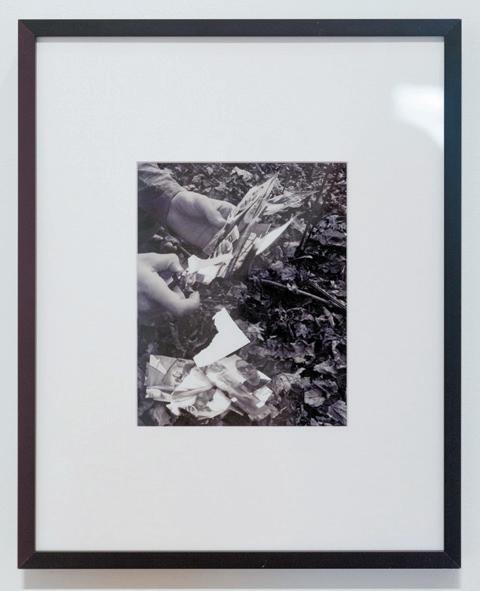
Sophomore Addison McClain's photographs depicts hands holding torn photographs.
LEFT
The exhibition is housed in the historic Kennedy Museum of Art.
Spot the five differences between these photos of students at Congress Fest on March 24.
PHOTO BY AMANDA DAMELIO
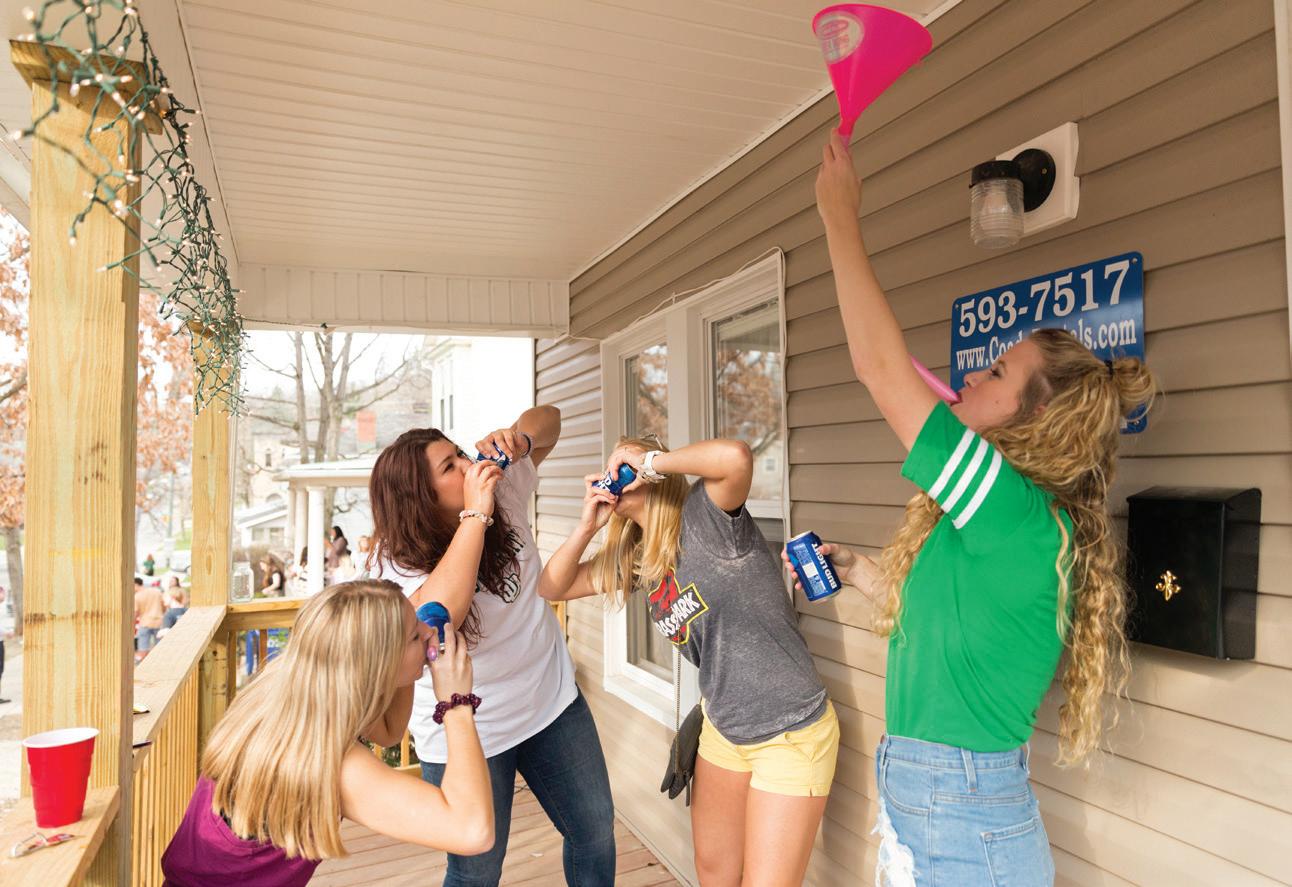
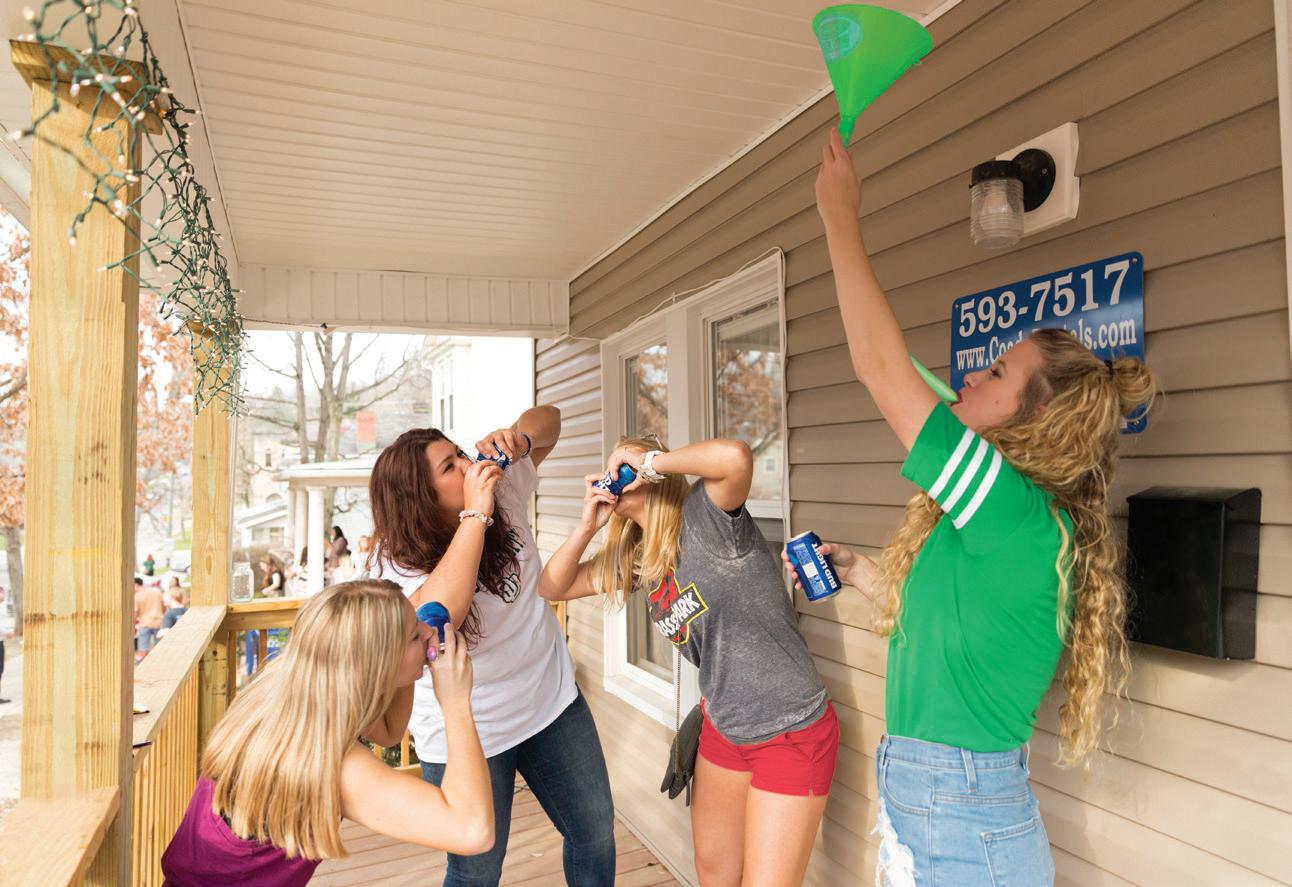
1
2
3
4
5

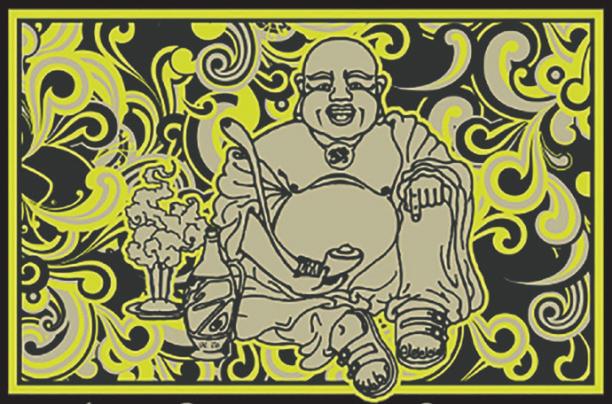
























































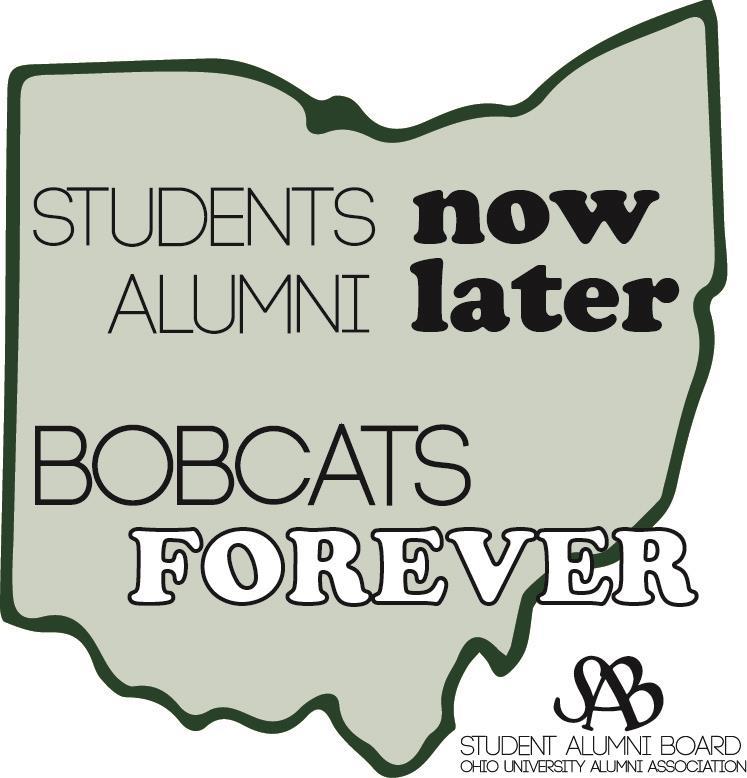

Your OHIO Journey is Just Beginning! Congratulations, Graduates!
